
Red Flags: Why Xi's China Is in Jeopardy
by
George Magnus
Published 10 Sep 2018
‘China 2030’, World Bank and Development Research Center of the State Council, p. 332. 25. World Health Organization, ‘Deepening Health Reform in China’, 2016. 7 Middle-Income Trap 1. Daron Acemoglu and James Robinson, Why Nations Fail: The Origins of Power, Prosperity and Poverty, Crown Publishers, 2012. 2. ‘With Greater Efforts, There’s Still Time to Avoid Middle-Income Trap’, China Daily, 17 March 2016, <http://www.chinadaily.com.cn/opinion/2016-03/17/content_23903667.htm>. 3. Greg Larson, Norman Loayza and Michael Woolcock, ‘The Middle-Income Trap: Myth or Reality?’, Research & Policy Briefs, March 2016, <http://documents.worldbank.org/curated/en/965511468194956837/pdf/104230-BRI-Policy-1.pdf>. 4.
…
Barry Eichengreen, Donghyun Park and Kwanho Shin, ‘Growth Slowdowns Redux: New Evidence on the Middle-Income Trap’, NBER Working Paper 18673, January 2013. 5. Ruchir Sharma, ‘Broken BRICs: Why the Rest Stopped Rising’, Foreign Affairs, November/December 2012. 6. Pierre-Richard Agenor, ‘Caught in the Middle? The Economics of Middle-Income Traps’, Fondation pour les études et recherches sur le développement international, May 2016, p. 6, <http://www.ferdi.fr/sites/www.ferdi.fr/files/publication/fichiers/wp142_agenor-upadte_version-2016-05.pdf>. 7. World Bank, ‘World Development Report 2017’. 8. Jesus Felipe, ‘Tracking the Middle-income Trap: What Is It, Who Is in It, and Why?’
…
China will have to consider how to evolve coping mechanisms best suited to itself when it comes to labour force participation and the organisation of work. Ultimately, like all other ageing economies, it will have to look to productivity growth. This takes us directly to the issue underlying the fourth red flag, the middle-income trap. 7 MIDDLE-INCOME TRAP In a notable book about economic development, entitled Why Nations Fail, authors Daron Acemoglu and James Robinson set the scene by introducing us to the city of Nogales.1 To the north of the fence that divides it lies the American city of Nogales, Arizona. To the south lies the Mexican city of Nogales, Sonora.
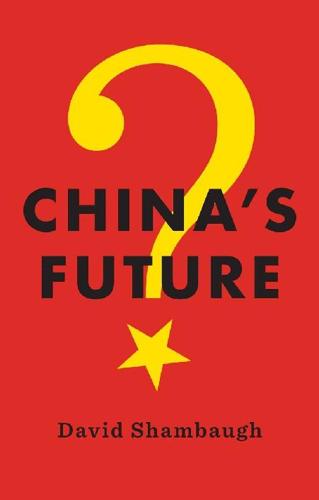
China's Future
by
David Shambaugh
Published 11 Mar 2016
Most of the rest of the countries failed to finish this process and saw economic stagnation, even recession, half-way catching up but getting stuck in the Middle Income Trap. Latin American nations and the countries of the former Soviet Union and Eastern Europe are typical examples of that.”13 The scope and scale of inhibiting factors in China’s case are far greater. Finance Minister Lou Jiwei recently admitted in a speech at Tsinghua University that there was only a 50 percent chance of escaping the Middle Income Trap.14 But, concomitantly, if China succeeds in doing so it will produce an economy the likes of which the world has never witnessed.
…
A return to Soft Authoritarian and more liberal approaches to politics and state-society relations would have many positive effects on the economy. But ultimately, it would not be sufficient to fully escape the Middle Income Trap and become a fully mature modern economy. That requires fuller democratization. It could also be that Soft Authoritarianism is the midwife to Scenario 4. Semi-Democracy and Successful Reform If China were to embrace a transition to a Singapore-style democracy, it would permit all of the qualitative changes needed to transition from the old to the new growth and development model. Under this scenario, China escapes the Middle Income Trap (by innovating its way out), resolves its debt overhang problem and fixes its financial system, introduces greater competition and market forces throughout the economy, succeeds in the government’s urbanization scheme (see next chapter) and resolves the hukou dilemma, expands the service sector and household consumption, tackles corruption, cleans up the environment, fully taps factor endowments (land, labor, capital), becomes an innovative society, and achieves many other goals envisioned in the Third Plenum documents and the World Bank/State Council China 2030 report.
…
I am grateful to Pieter Bottelier for these insights. 10. http://data.worldbank.org/indicator/NY.GDP.PCAP.CD. 11. See Naughton, “Economic Rebalancing, op. cit., p. 117. 12. See Wing Thye Woo, “The Major Types of Middle Income Trap that Threaten China,” in Wing Thye Woo, Ming Lu, Jeffrey D. Sachs, and Zhao Chen (eds.), A New Economic Growth Engine for China: Escaping the Middle Income Trap by Not Doing More of the Same (London and Singapore: Imperial College Press and World Scientific Publishing, 2012). 13. Chen Changsheng and He Jianwu, “A Ten-Year Outlook,” in Li Shijin and Development Research Center of the State Council Medium to Long-Term Growth Project Team, China’s Next Decade: Rebuilding Economic Momentum and Balance (Hong Kong: CLSA Books, 2014). 14.
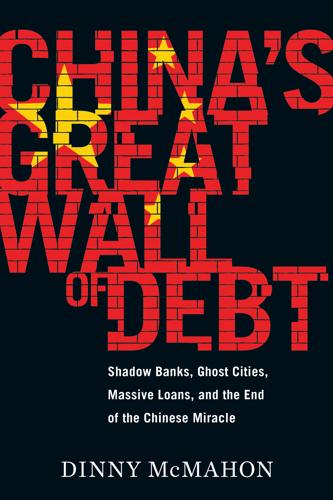
China's Great Wall of Debt: Shadow Banks, Ghost Cities, Massive Loans, and the End of the Chinese Miracle
by
Dinny McMahon
Published 13 Mar 2018
That’s what makes Lou Jiwei, who until late 2016 was China’s finance minister, so pessimistic about the country’s growth prospects. “In the next five to ten years, the chance of China sliding into the middle-income trap is extremely high. I put the odds at 50–50,” Lou said in a speech to Tsinghua University students in mid-2015. “Why? . . . Because society is aging and the working-age population is shrinking too fast.” The middle-income trap is an idea first conceived by World Bank economists who found that, of the 101 developing economies that, in 1960, could be classified as having been “middle income” (that is, they weren’t stuck in poverty, but they didn’t qualify as developed nations either), only 13—a group that includes Japan, South Korea, Singapore, Israel, and Ireland—managed to become rich nations by 2008.
…
Economists generally agree that developing countries can achieve a certain level of wealth simply by taking people from the countryside and putting them to work in factories. But there comes a point when labor stops being cheap, requiring the overall economy to transform in some way if it’s to continue its upward trajectory. What economists can’t agree on is what sort of reform is necessary to facilitate the transition. The “middle-income trap” is the bête noire of the Chinese leadership. In 2015, the World Bank defined rich nations as those with gross national incomes of more than $12,475 per capita, and the level generally rises by about 2% each year. In 2016, China’s GDP per capita was $8,000. If the Chinese economy continues to grow at 6.5% a year—as it did in 2015—it could officially enter the ranks of rich nations by the middle of the next decade.
…
He called the strategy “supply-side structural reform.” According to an anonymously written column published on the front page of the People’s Daily in mid-2016, widely assumed to have been written by Xi’s closest economic adviser, supply-side reform is to be “the lifeline that saves China from the middle-income trap.” At first blush, it seems an odd school of economic thought to be embraced by China’s Communists. After all, supply-side economics is most closely associated with Ronald Reagan. Under Reagan, supply-side economics—alternatively labeled “trickle-down” or “voodoo” economics—meant stimulating the economy by cutting business taxes.

Democracy and Prosperity: Reinventing Capitalism Through a Turbulent Century
by
Torben Iversen
and
David Soskice
Published 5 Feb 2019
But this is not synonymous with deciding whose class interests are favored by government policies; the fundamental equality of democracy is an expression of middle-class power. In the following we develop our argument further by applying it to the five puzzles we identified above in addition to the resilience of ACDs: the middle-income trap; the strengthening of advanced capitalism by democracy; the rise of democracy; persistent varieties of capitalism in an age of globalization; and the lack of response to rising inequality. 1.4. The Middle-Income Trap Puzzle A remarkable fact is that the group of advanced democracies has only been slightly expanded since their rise in the nineteenth and early twentieth centuries. The distribution of world income has become marginally more equal since the 1980s, but this is virtually all due to the rise of a few populous poor countries to the ranks of middle-income economies, notably China and India, and not the rise of middle-income countries into the high-income group.
…
Democratic parties and politicians that successfully promote the prosperity and welfare of a majority will be rewarded by winning elections, and the majority will be skilled workers who are keen to see the advanced sectors of the economy thrive. Spelled out in greater detail below, we thus see our broad approach going some way in explaining the resilience puzzle. It also explains, we believe, five related puzzles which we elaborate below: first, the middle-income trap, and why so few countries have developed into advanced capitalist democracies after the Second World War. Second, it shows why a thoroughly integrated world economy has not undermined the existence of different forms of advanced capitalist democracies, since their institutional differences cause and are caused by distinct patterns of specialization.
…
Countries all the way to the left received zero patents in 1976 and have been assigned an arbitrarily low value (since numbers are logged). Source: OECD.Stat. Data extracted on March 3, 2018, 02:19 GMT. The difficulty of breaking into the rich ACD club is known in the economic literature as the “middle-income trap” (e.g., Kharas and Kohli 2011). Eichengreen et al. (2012) have persuasively argued that the key barrier is the creation of large knowledge-intensive sectors sustained by internally driven innovation. It is precisely the existence of such dynamic, skill-intensive sectors that define advanced capitalism as we use it in this book.
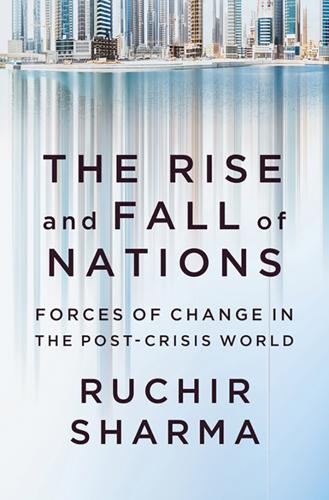
The Rise and Fall of Nations: Forces of Change in the Post-Crisis World
by
Ruchir Sharma
Published 5 Jun 2016
They hound an aspiring nation at every step up the development ladder. Yet the hype over the middle-income trap has only grown since 2010. A 2013 study by the Berkeley economist Barry Eichengreen and his colleagues noted that a Google search turned up a total of four hundred thousand references to the middle-income trap. Dig into those stories, and one finds warnings about countries ranging from poor ones like Vietnam and India to richer ones including Malaysia, Turkey and Taiwan at risk of falling into the middle-income trap. The concept of the trap is so vaguely and variously defined that it doesn’t help narrow down the list of vulnerable countries.
…
Im, Fernando Gabril, and David Rosenblatt. “Middle Income Traps A Conceptual and Empirical Survey.” World Bank Operations and Strategy Unit, Working Paper no. 6594, September 2013. Joffe, Josef. “China’s Coming Economic Slowdown.” Wall Street Journal, October 25, 2013. Kraay, Aart, and David McKenzie. “Do Poverty Traps Exist? Assessing the Evidence.” Journal of Economic Perspectives 28, no. 3 (2014): 127–48. Lomax, John, and Wietse Nijenhuis. “Not in a (Middle-Income) Trap.” HSBC Research, 2013. Magnus, George. “Hitting a BRIC Wall: The Risk of the Middle Income Trap.” UBS Investment Research, January 21, 2013.
…
Over the next four years, Brazil’s economic growth rate fell by more than half and its stock market lost 50 percent of its value in dollar terms. In late 2013, The Economist ran a cover with the same Christ statue nose-diving into the ground, asking a bit more tentatively, “Has Brazil blown it?” The Case for Constant Vigilance Why is it so difficult for any economy to sustain strong growth? One popular explanation is the middle-income trap, which holds that a poor nation can grow at catch-up speed by making simple improvements such as paving roads but will find it difficult to sustain rapid growth when it hits a middle-income level and needs to develop more advanced industries. The truth, however, is that “development traps” can knock countries off track at any income level.

Belt and Road: A Chinese World Order
by
Bruno Maçães
Published 1 Feb 2019
Local governments’ heavy reliance on fiscal policy periodically results in large property bubbles and massive investment in heavy industry and construction threatens environmental sustainability. All these signs seem to indicate that China is a prime candidate for what development economists call “a middle-income trap”. The term captures a situation where a country can no longer compete internationally in standardized, labor-intensive commodities because wages are relatively too high, but neither can it compete in higher value added activities on a broad enough scale because productivity—constrained by structural factors—remains relatively too low.
…
In 2015 China’s finance minister, Lou Jiwei, took the unusual step of publicly conceding that China had a 50 per cent chance of falling into the much-dreaded trap. Speaking at a conference at Tsinghua University, Lou argued that the government needed to solve the problem of structural imbalances and market distortions in the economy within the next five to seven years while maintaining 6.5 to 7 per cent growth in order to avoid the middle-income trap. To that end, he highlighted reforms in five sectors, including encouraging imports of agricultural products, accelerating reform of the hukou (household registration) system, speeding up human resources reform, pushing rural land reforms, as well as tackling social security system-related issues.
…
The strategy, approved in July 2015, unabashedly claims: “We will strive to transform China into the global manufacturing leader before the centennial of the founding of New China, which will lay the foundation for the realization of the Chinese dream to rejuvenate the Chinese nation.” The present moment, however, is fraught with danger. China finds itself on the cusp of falling into a middle-income trap. After the global financial crisis, developed countries have been attempting to revive their industrial sectors, as a response to both electoral discontent about job losses and the sense that manufacturing is entering a significant new revolution. Meanwhile, developing countries are seeking to expand their share of global industrial labor and are investing in industrial capital to develop their export markets.
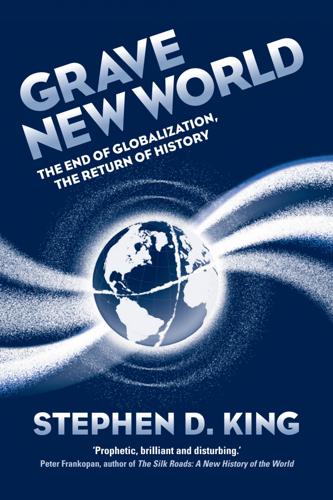
Grave New World: The End of Globalization, the Return of History
by
Stephen D. King
Published 22 May 2017
Fukuyama, Political Order and Political Decay: From the Industrial Revolution to the globalization of democracy, Farrar, Straus and Giroux, New York, 2014. 8.See, for example, http://www.theguardian.com/world/datablog/2015/jul/23/vladimir-putins-approval-rating-at-record-levels 9.http://www.ned.org/remarks-by-president-george-w-bush-at-the-20th-anniversary/ 10.https://www.theguardian.com/world/2016/nov/15/mohamed-morsi-death-sentence-overturned 11.Escaping the so-called middle-income trap has not been easy. See, for example, R. Cherif and F. Hasanov, The Leap of the Tiger: How Malaysia can escape from the middle income trap, IMF Working Paper WP/15/131, Washington, DC, June 2015, available at https://www.imf.org/external/pubs/ft/wp/2015/wp15131.pdf 12.Hillary Clinton would have killed it off, too. 13.J. Darwin, After Tamerlane: The rise and fall of global empires, 1400–2000, Allen Lane, London, 2007. 14.IMF World Economic Outlook database. 15.R.
…
That unease becomes more pronounced when China’s economic progress is compared with democratic India’s more measured advance. In the mid-1970s, per capita incomes in China overtook those in India. By 2010, the average Chinese citizen enjoyed an income more than double that of his or her Indian counterpart. Admittedly, China might prove to be yet another casualty of the so-called ‘middle-income trap’. Recent history is certainly not encouraging. In the second half of the twentieth century, only a handful of what might loosely be described as ‘non-Western’ countries successfully managed to achieve typical Western living standards: Japan, South Korea, Hong Kong, Singapore, Taiwan and, at a pinch, Israel.11 Despite huge progress, China’s per capita incomes in 2015 were still only 25 per cent of those in the US, less than the Soviet Union managed – relatively – in the 1930s and the 1970s.
…
Kicking Away the Ladder: Development strategy in historical perspective, Anthem Press, London, 2002 Chang, Ha-Joon. Bad Samaritans: The myth of free trade and the secret history of capitalism, Bloomsbury, New York, 2008 Cherif, R. and F. Hasanov. The Leap of the Tiger: How Malaysia can escape from the middle income trap, IMF Working Paper WP/15/131, Washington, DC, June 2015, available at https://www.imf.org/external/pubs/ft/wp/2015/wp15131.pdf Chetty, R., N. Hendren and L. Katz. ‘The effects of exposure to better neighborhoods on children: New evidence from the moving to opportunity experiment’, American Economic Review, forthcoming Chetty, R., N.
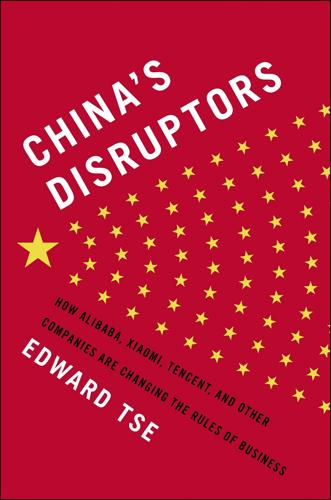
China's Disruptors: How Alibaba, Xiaomi, Tencent, and Other Companies Are Changing the Rules of Business
by
Edward Tse
Published 13 Jul 2015
Support for this part of the economy will help the country tackle such challenges as navigating its way through the middle-income trap—the tricky stage of development that would raise per capita GDP from $10,000 to the high-income level of around $20,000—and transforming its disciplined, labor-intensive manufacturing industries that make low-priced export goods into ones with the flexibility, creativity, and skilled staff that are the prerequisites for building a developed nation. Relying on exports alone to overcome the middle-income trap is tricky. Instead, companies need to ride increasing sophistication in their home markets up the value chain, producing more complex goods as people in China become richer.
…
Warren, 93–94 McGrath, Rita Gunther, 99 Manganese Bronze, 133 manufacturing, 109–10 Mao Zedong, 13, 42, 51 Cultural Revolution instigated by, 4, 42, 43 Marks and Spencer, 194 media, 157–62, 213 medical research, 109 Meituan.com, 53, 191 Metallurgical Corporation, 124 MG Rover, 136–37 Mi, 68 see also Xiaomi Miasolé, 123 Microsoft, 112 middle-income trap, 213–14 Mindray Medical International, 122–23, 178 mining, 119, 163 Mitchell, James, 136 motorcycles, 47, 76, 95, 100, 178 Motorola Mobility, 127, 128, 129, 136 Nan Fung, 224 Nanjing Auto, 136 Naspers, 86, 194 National People’s Congress, 43, 81 Navarro, Peter, 9 Nestlé, 194, 196 New Citizens Movement, 170 New York Stock Exchange, 33, 52, 159, 206 Nexen, 119–20 Nike, 195 Nissan, 180 Noah Wealth Management, 12, 150, 153, 212 Nokia, 102, 112 Nortel, 102 open markets, 71, 72–77, 83, 85, 88, 97 Panda W, 205–7, 208, 225 Pan Shiyi, 48 People’s Liberation Army, 101–2 Pepsi, 180 Pew Research Center, 219 piracy, 9, 75, 199 pollution, 115, 209, 212, 217, 221 Pope, Larry, 22 pride, 41, 55, 57, 61, 123 private-equity funds, 79 Procter & Gamble, 12, 175, 177 products, updating of, 97 property rights, 81, 170 Pudong New Area, 224 Putzmeister, 130 Qihoo 360, 84, 113 Qingdao Refrigerator Factory, 4–5 see also Haier Qingqi, 76 QQ, 85, 86, 160, 185, 201 Reckitt Benckiser, 194, 196 Red Packet, 88 Red Rice smartphone, 69 Renault/Nissan, 133 Renren, 52–53 Ren Zhengfei, 11, 43–44, 54, 60, 101–3, 175, 200 Rio Tinto, 119 robots, 110 Roche Diagnostics, 155 Roewe, 137 Russia, 13, 68 doctorates in, 108 oligarchs in, 17 SAIC Motor Corp, 136–37 Samsung, 67, 68, 89, 128 Sany, 178 Sanyo Electric, 7 Schumpeter, Joseph, 163 Sehgal, Aditya, 196 Sequoia Capital, 113, 150 SF Express, 100 shared heritage, 55, 61–64 Shen, Neil, 113 Shenzhen Stock Exchange, 156 Shunwei China, 112 Siemens, 102 Silicon Graphics, 112 Silicon Valley, 18 Silk Road, 57 Sina Weibo, 69, 87–88, 161, 170, 191 Singapore, 68, 100, 155 SingPost, 100 Sino Iron mine, 124 Sinovac Biotech, 109 Sky City, 217–18, 221 Skype, 129 smartphones, 9, 11, 67–70, 75, 89, 128, 135, 139 Smithfield Foods, 22, 120 Softbank, 37, 156, 194 SOHO China, 48 Sohu, 158, 159 sourcing networks, 188 South China Morning Post, 37 South Korea, 121, 141 special economic zones, 43 Standard Chartered, 151 State Administration of Press, Publication, Radio, Film, and Television, 219 State Council, 215 state-owned enterprises, 9–10, 13–14, 36, 40, 76, 80, 119, 137, 158, 164, 176, 179–80, 209, 213 strategy+business, 49–50 Su, Sam, 196 subsidies, 9, 163 Surprise (series), 160 Sze Man Bok, 43, 176, 177 Tabarrok, Alex, 113 Taikang Life Insurance, 45, 55, 148 Taiwan, 68, 121, 214 Taizhou, 44 Tang dynasty, 28–29, 229 Tango, 135 Tan Wanxin, 13 Taobao, 34–35, 38, 40, 184 TCL, 76, 84, 148 Tedjarati, Shane, 190, 196 telecoms, 103–4, 122, 178 television, 76, 158, 178, 219 Tencent, 11, 18, 39, 52, 60, 80, 81, 83–84, 85–88, 90, 101, 135, 136, 151, 158, 159, 161, 162, 185, 191, 201, 222, 225 founding of, 49, 85 innovation by, 94, 113 Naspers’ purchase of stake in, 86, 194 overseas listing of, 89 revenue of, 87 Tenpay system of, 36 Tenpay, 36, 87 Tesco, 180 Tetra Pak, 196 ThinkPad, 128 Third Plenum of the 18th Party Congress, 211, 214, 215 Thomas Group, 177–78 3D printing, 110–11 360 Mobile Assistant, 84 Tian, Lawrence, 147–48 Tiananmen Square, 44 Tingyi, 180 Tmall, 36, 38, 87, 184, 195, 206 Tmall Global, 195 Toyota, 133, 180 TPG Capital, 225 transport, 115 Tsai, Joe, 37 Twitter, 87, 222 United Kingdom, doctorates in, 108 United States, 18 doctorates in, 108 R&D spending in, 107 technological supremacy of, 106 urbanization, 28, 115, 214 Uyghurs, 53 Vanke, 148 Vantone Holdings, 46, 148 vehicles, 115 venture capital, 79 Vipshop, 84, 113, 206 Volkswagen, 133, 137, 179, 180 Volvo, 123, 131, 132, 133, 134, 138, 185 wage pressure, 98 Wallerstein, David, 136 Wal-Mart, 96, 194 Wanda E-Commerce, 88 Wang, Diane, 12, 57 Wang, Victor, 145–47, 167, 168–69, 171 Wang Jianlin, 48, 88, 172 Wang Jingbo, 12, 150, 152 Wang Shi, 148 Wang Wei, 147–48 Wang Xing, 52–53 Wanxiang, 130, 134, 178 Ward, Stephen, 126 water, 6, 25, 106, 188 WeChat, 18–19, 84, 87, 88, 139, 160, 185, 191, 201, 212 Wen Jiabao, 147 WhatsApp, 18–19, 191 WH Group, 21–22, 120 Wong, Jessica, 205–7, 208, 210, 214, 225 World Economic Forum, 147 World Health Organization (WHO), 114 World Trade Organization, 6, 16, 37–38, 47, 122, 222 Xiangcai Securities, 150 Xiaomi, 11, 12, 57, 67–70, 75, 77, 89, 101, 128, 139, 162, 191–92, 197, 226 innovation by, 94, 112, 113 Xiaonei, 52–53 Xi Jinping, 78, 80, 152, 160, 165, 167, 168, 170, 181, 210–11, 213, 223, 229 Xu, William, 222 Xue, Charles, 161, 170 Xu Lianjie, 12, 43, 53, 175–78, 200 Yabuli, 145, 147, 149, 166 Yahoo, 194 Yang Yuanqing, 11, 125–26, 128, 148 Yao, Frank, 205–7, 210, 214, 225 Yihaodian, 11, 89, 95–97, 194 Yinlu, 194 Yoga IdeaPad, 127 Youku Tudou, 84, 114, 158–60, 161, 162, 209, 212, 218 YouTube, 158, 218 yuan, 9 Yu’e Bao, 39, 40, 153, 212 Yu Gang, 11, 94–96, 100, 112 Yum!
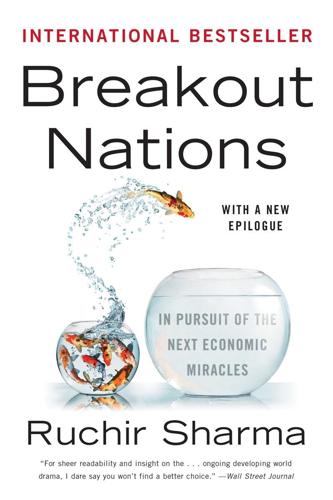
Breakout Nations: In Pursuit of the Next Economic Miracles
by
Ruchir Sharma
Published 8 Apr 2012
They have hit the “middle-income trap,” where they can idle for years, like unhappy residents of a lower-middle-class suburb. Typically the middle-income trap is said to spring at an income level equal to between 10 and 30 percent of the income level in the world’s “leading nation,” the one that sets the gold standard in technology and management. Today that nation is the United States, and 10 to 30 percent of the average U.S. income is $5,000 to $15,000, which clues you in to the problem with this academic concept. The range of incomes is so large that the middle-income trap is not terribly useful as a guide to which nations really have the potential to continue growing at a rapid pace.
…
The range of incomes is so large that the middle-income trap is not terribly useful as a guide to which nations really have the potential to continue growing at a rapid pace. The middle-income trap also ignores the separate phenomenon of the middle-income deceleration. The economies of many nations have slowed down to a lower cruising speed, even if they did not stop catching up entirely. This has been the experience of even the most successful growth stories in modern history, including those of Japan, Korea, and Taiwan, which witnessed an early deceleration at an income level equivalent to where China is today. After adjustments are made for changes in the exchange rate, China is at roughly the same income level—of around $5,000—as Japan in the early 1970s, Taiwan in the late 1980s, and Korea in the early 1990s.

The End of Cheap China: Economic and Cultural Trends That Will Disrupt the World
by
Shaun Rein
Published 27 Mar 2012
Factions within the government that want to lower China’s trade surplus with America and other nations, and to move China away from high-pollution manufacturing toward more sustainable service businesses, are pushing for higher consumption. They urge greater appreciation of the renminbi to allow everyday Chinese to buy more goods. Groups urging a stronger renminbi are motivated by the fear that China will fall into the “middle income trap,” as many developing countries, like Mexico, have done. The trap is a per capita GDP of about $6,000, at which point it is common for average salaries to stagnate, while the gap between the wealthy and the poor increases. To avoid the income gap and becoming a failed developing economy, Zhou Xiaochuan, the governor of the People’s Bank of China (the country’s central bank), has made it a priority to try and implement better social security and medical benefits, so that everyday Chinese feel more confident about their future well-being and are willing to spend more.
…
See factories, Chinese Mao Zedong Marks & Spencer Mattel McDonald’s McGill University McGregor, James meat products Chinese demand for, increase in as luxury in 1990s China Walmart organic meat scandal media, Western anti-China headlines in on China, misinformation and stereotypes Chinese government, criticism of Chinese land protests, depiction of Chinese women, portrayals of rural China riots, depiction of social media, blocking of medical care, in China improvements to lack of pollution and medical devices industry melamine Melanie (young woman) memorization, in education Mengniu Dairy Mercedes-Benz Mexico, income gaps in microblogging sites Microsoft middle class, Chinese average living conditions of consumer spending, growth of luxury brands, desire for Western views of Middle East “middle income traps” migrant workers military actions, potential for milk scandal millionaires. See billionaires/millionaires, Chinese Mimi (Chinese student) Mindray Ministry of Education, China Ministry of Health, China Miranda (Australian student) morality campaign Motorola Mr. Zhou (billionaire) Mubarak, Hosni Mueller, Robert Musashi, Miyamoto Muslim uprisings Myanmar N Nanjing Road Nankai University National Association of Home Builders Nationalist Party, China natural resources in Africa in Australia in Canada China’s demand for, world affairs and China’s growth and depletion of China’s lack of, price increases and copper iron ore oil and gas Nazis Negishi, Ei-ichi Nestlé New Oriental New Weekly magazine New York City New York Stock Exchange New York Times NGOs Nike 9/11 attacks Ningbo, China Nobel Prize winners in chemistry in economics lack of Chinese scientists as nongovernmental organizations (NGOs) noninterference foreign policy nut farming O Obama, Barack anti-Chinese rhetoric by immigration policies of job creation bill Occupy Wall Street protests Ogilvy & Mather Ohio oil, Chinese demand for oil prices, increase in Okura Garden Hotel older generation, in China Cultural Revolution, views on marketing to retirement age rules and Omega watches On China (Kissinger) one-child policy aging population due to female empowerment and female infanticide and as human rights issue jobs and wages, rise in male-female imbalance sex-selective abortions and societal views on optimism, in China about future opportunities among Chinese women of Chinese entrepreneurs consumption patterns and Cultural Revolution and emphasis on in marketing reasons for of women of young people Oreo cookies Organisation for Economic Co-operation and Development outsourcing, American support for Owens, William Oxford University P Pakistan Panamera sedan Paris, France patriotic pride, U.S.

Shutdown: How COVID Shook the World's Economy
by
Adam Tooze
Published 15 Nov 2021
In a year in which according to the World Bank, around 100 million people worldwide were hurled back into abject poverty, no other state could boast of any similar achievement. As Xi put it to a full meeting of the Politburo Standing Committee in January 2021, “time and momentum” were on China’s side.31 Any idea of convergence with liberal norms once touted by Western modernization theory was clearly obsolete. Advocates of the middle-income trap—a negative version of modernization theory that highlights the great difficulties facing middle-income countries in making the leap to advanced economy status—might cling to their doxa.32 But as the Chinese like to point out, if social science is a matter of data, China’s modernization, through its sheer scale, generates more data points than any previous episode of economic growth.
…
Richardson, “China’s Policy Dilemma: Raising Local Demand While Protecting Exports,” ICIS, September 13, 2020. 31. K. Lo and K. Huang, “Xi Jinping Says ‘Time and Momentum on China’s Side’ as He Sets Out Communist Party Vision,” South China Morning Post, January 12, 2021. 32. T. Taylor, “Will China Be Caught in the Middle-Income Trap?” Conversable Economist, October 26, 2020. 33. Jiang Shigong, “Philosophy and History: Interpreting the ‘Xi Jinping Era’ Through Xi’s Report to the Nineteenth National Congress of the CCP.” Introduction by David Ownby and Timothy Cheek; www.readingthechinadream.com/jiang-shigong-philosophy-and-history.html. 34.
…
See also developing countries Luce, Edward, 85 Lunar New Year (China), 52 Ma, Jack, 201 Macron, Emmanuel, 12, 70, 82–84, 135, 182, 184–86, 242 Made in China 2025 program, 212, 235 Maduro, Nicolás, 169, 197 Magufuli, John, 77 Main Street Lending Program, 128 Maktoum, Mohammed bin Rashid Al, 248 Malaysia, 135 Malpass, David, 252, 256–57 Mao Zedong, 18 market failures, 34–37, 44 market revolution, 10–11, 14–15, 20, 145, 234 Marshall Plan with Africa, 264 Martin, Katie, 76 Marx, Karl, 18 Marxism, 298 Mattarella, Sergio, 285 May, Theresa, 277 McCain, John, 226 McConnell, Mitch, 222–23, 271, 300 McCulley, Paul, 146 Meng Wanzhou, 210–11 Mercator Institute for China Studies, 297 Merck, 236, 240 Merkel, Angela: and climate agenda, 190; and development of European recovery fund, 184–86; and early responses to pandemic, 82; and environmental agenda, 190–91; and EU-China Comprehensive Agreement on Investment, 296; and European sovereign debt crisis, 186; and fiscal responses to pandemic, 134; and global vaccine rollout, 243; and NextGen EU fiscal package, 280; and scope of 2020 challenges, 12 Messonnier, Nancy, 75 Mexico, 11, 13, 77, 82, 89, 122, 125, 133, 163, 165, 170–73, 206, 246 Michele, Bob, 124 microchip manufacturing, 211–12 Middle East, 295 Middle East respiratory syndrome (MERS), 36, 47, 53, 73, 237 middle-income trap, 298 migration and mobility, 9, 58, 96, 104–5, 141, 169, 265, 279, 298. See also travel restrictions and slowdowns minimum wage, 290, 299 Mnuchin, Steve, 68, 71, 76, 120, 151, 222, 252–53, 261, 271–72 Moderna, 238–41, 245–46, 249, 289 modernization, 298–99 Modi, Narendra, 11, 87–88, 104, 135, 208 monetary policy, 113–23; and central bank interventions, 123–26, 126–30; and early responses to pandemic, 111–12, 223–24; and lessons of 2020, 294; Modern Monetary Theory (MMT), 13, 146, 183; monetization of debt and deficits, 145–47, 149–50, 203–4 Monetary Policy Committee (of the Bank of England), 125 Money Market Mutual Fund Liquidity Facility (MMLF), 129 Moody’s rating agency, 166, 257–58, 270 Moore, Stephen, 76 Morawiecki, Mateusz, 280 Moreno, Lenín, 8, 168 Morin, Edgar, 6 mortality rates of coronavirus pandemic, 28, 36–37, 37–41, 169, 171 mortgage-backed securities, 14, 113–15, 117, 122, 129, 144 mRNA technology, 244, 246, 289 Müller, Gerd, 264, 265 Munich Security Conference, 2, 70 Municipal Liquidity Facility, 129 Musk, Elon, 86 mutation of viruses, 17, 44–46, 250, 266, 285 mutual funds, 115, 117–18, 125, 127, 129, 143, 150, 202 N95 masks, 196 Namibia, 268 National Audit Office (Britain), 69 National Bureau of Statistics, 61–62 National Center for Immunization and Respiratory Diseases, 75 National Congress (Brazil), 171 National Health Commission (China), 50 National Health Service (Britain), 39, 85 National Institute for Health and Care Excellence, 39 National Institute of Health (Peru), 248 nationalism, 6, 11, 16, 20–21, 47–48, 68, 162, 185, 193, 297–98 Nationally Determined Contributions (NDCs), 190 National People’s Congress (China), 49, 56, 204 National Security Strategy, 18, 210 Navalny, Alexei, 247 Navarro, Peter, 68, 220–21 neoliberalism, 6, 10–11, 13–17, 20, 22, 132, 160, 304 Netherlands, 33, 104, 134, 179, 181, 186 New Arrangements to Borrow, 162 New Deal, 20, 105 New York City, 71, 80–81, 83, 90, 105, 220, 229 New Zealand, 138 Next Generation (NextGen EU) program, 12, 186, 189, 279–80, 282, 284–85, 302 Nigeria, 28, 88, 100, 132–33, 156, 233, 268 North Atlantic Treaty Organization (NATO), 70, 295 Norway, 33, 140, 243 Novavax, 239 Obama, Barack, 18, 46–47, 136, 177, 206, 210, 253, 275, 287–89, 300, 302 O’Brien, Robert, 218 Ocasio-Cortez, Alexandria, 20 oil and gas resources, 18, 79–80, 140, 161, 164, 204–5, 295 Olympic Games, 73, 88 Operation Warp Speed, 239–40, 303 Orbán, Viktor, 279 Organisation for Economic Co-operation and Development (OECD), 38, 138–40, 141–42, 144, 195, 281–82 Organization of the Petroleum Exporting Countries (OPEC), 79, 165 Oswaldo Cruz Foundation, 167 Overseas Private Investment Corporation, 263 Oxford University, 238, 239, 245–47 Pakistan, 83, 103, 197, 208–9, 256, 258, 263 Palin, Sarah, 226 Panama, 165 Pan American Health Organization, 167 Pandemic Emergency Purchase Programme (PEPP), 180–81 Paris Climate Agreement, 190, 193–94 Paris Club, 255, 255–56 Patrick, Dan, 39 Paycheck Protection Program (PPP), 140 Pearl River Delta, 198 Pegatron, 61 Pelosi, Nancy, 12, 222–23, 272–73, 276 Pence, Mike, 76 pension systems, 126, 266, 285 People’s Bank of China, 55, 160, 165, 188, 203–4 People’s Liberation Army, 247 People’s Political Consultative Conference, 49 personal protective equipment (PPE), 40, 66, 75, 135, 163, 196–97, 249 Peru, 158, 168–72, 198, 248, 268 Pfizer, 67, 234, 238–41, 244, 246, 248–49, 251, 289 Philippines, 11, 83, 106–7, 189 PIMCO, 146, 262 Piñera, Sebastián, 12 Poland, 279–80, 280–81, 283 polio, 30, 32, 235 “polycrisis” concept, 6, 81, 279, 288, 305 Pompeo, Mike, 68, 70, 218 populism, 3, 6, 12, 47–48, 77, 173, 179, 219, 269, 275, 280, 284 Portugal, 134, 177, 181 Powell, Jerome, 71, 76, 120–21, 123, 126–27, 130, 149, 220, 221, 272, 290, 291 Primary Market Corporate Credit Facility (PMCCF), 127 public health systems, 30, 45, 134 Putin, Vladimir, 11, 67, 295 Qatar, 267, 295 Quality-Adjusted Life Years (QALYS), 39 quantitative easing (QE), 126, 145–49, 154, 178, 203, 275 quarantines: and California wildfires, 189; in China, 52, 54, 57–59; and cruise ships, 106–7; and early responses to pandemic, 66; and economic impact of pandemic, 43; and influenza, 30; and “lockdown” term, 10; in Northern Italy, 71–72; and “polycrisis” concept, 7; “quarantine gate,” 58; and role of the WHO, 32; and short-time working, 103–4; in South Korea, 80; in Spain, 85; and Trump’s failures of leadership, 81; in UK, 84.

The Great Demographic Reversal: Ageing Societies, Waning Inequality, and an Inflation Revival
by
Charles Goodhart
and
Manoj Pradhan
Published 8 Aug 2020
The main hindrance to development among emerging economies lies in their ability to execute a complex, coordinated and long-term economic strategy. We would go so far as to say that emerging economies that cannot transform themselves into advanced economies fail not because of the so-called middle-income trap but because of an administrative trap. The predictions of Desmet et al., while inspiring, are conditional on the development of the stock of administrative capital which these economies lack. © The Author(s) 2020 C. Goodhart, M. PradhanThe Great Demographic Reversalhttps://doi.org/10.1007/978-3-030-42657-6_11 11.
…
Medicaid and Medicare, US Medical breakthrough Medical care Medical care costs Medical expenses Medical expenses, rising Medical, perspective on ageing Medical services, hard to raise productivity Medical support Medicare payments Melitz, J. Memories, short Mental decay Mercantilism METI white paper Metropolitan subway systems Mexico Miami, sinking below water line Mian, A. Middle cycle, of population growth Middle East ‘Middle-income trap’ Migration Migration, fear of enhanced Migration, internal Migration, inward into AEs, declining Migration, needed, but politically unpopular Migration, outward from EMEs, declining Migration, problems of mass Migration, within USA, reduced Migration Advisory Committee (MAC) Milanovic, B.

Shocks, Crises, and False Alarms: How to Assess True Macroeconomic Risk
by
Philipp Carlsson-Szlezak
and
Paul Swartz
Published 8 Jul 2024
Economists sometimes use frontier to describe economies that are small and less developed. 2. By one estimate, 23 countries have moved from middle-income to high-income status since 1960. “Which Countries Have Escaped the Middle-Income Trap?” The Economist, March 30, 2023, https://www.economist.com/finance-and-economics/2023/03/30/which-countries-have-escaped-the-middle-income-trap. 3. Labor is linked to overall economic growth but not to per capita growth. And even for overall growth, labor’s importance declines as countries become richer and as population growth tends to slow. 4. This also results in higher dependency ratios, which, while not impacting labor supply directly, diverts resources to care and curtails the ability to invest and build capital. 5.
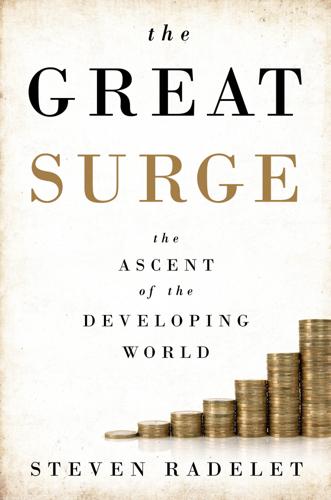
The Great Surge: The Ascent of the Developing World
by
Steven Radelet
Published 10 Nov 2015
Deeper global integration brings new ideas and technology, further supporting growth. At some point, many developing countries face a second major transition. Once most workers have switched to basic manufacturing and services, growth can get hung up again in what economists Homi Kharas of the Brookings Institution and Indermit Gill of the World Bank labeled the “middle-income trap”: the difficulty of shifting from low-skilled manufacturing and services (shoes and shirts) to higher-skilled products (electronics and call centers). Investments in education, training, health, and infrastructure can help, but some countries don’t make them. Income inequality can worsen if some workers move to high-skilled products but others remain stuck in lower-wage activities.
…
W., 143 Delhi, 287 democracy, 3, 5, 6–7, 9, 16, 21, 22, 23, 97, 146–50, 162, 232, 294, 296, 303, 309 in Africa, 135, 145 Asian values and, 121, 122–23 in Brazil, 186–87 capitalism and, 146, 149 development and, 125 expansion of, 248–49 failures of, 11, 263–64, 273 famines and, 128 and fundamentalist Islam, 265 globalization and, 157 improved governance and, 197–99, 199 lack of attention to increasing, 10 measurement of, 106–15, 110 and oil-exporting countries, 114–15 pessimism over, 120–25 poor countries as, 98 poverty and, 121 in retreat after World War I, 146–47 reversals in, 113–14 rise of, 103–6, 105, 110 slowing down of growth of, 233 demographics, changing, 21 dengue fever, 205 Deng Xiaoping, 43, 185, 289 reforms of, 35, 192 resignation of, ix–x, 123, 134–35 Derg, 100, 187 Desai, Raj, 260 developing countries, 9, 40 challenges to, 294 lack of growth in, 8, 11 as playing substantial role in global markets, 52 skilled leadership needed for, 234 trade between, 47, 262 see also progress in developing countries Development as Freedom (Sen), 19, 127 development assistance, 307–8 development traps, 118 Dhaka, 277 Diamandis, Peter, 300 Diamond, Jared, 13 Diamond, Larry, 110–11, 186 diamonds, 206, 207, 284, 285 Diaoyu, 288 Diarra, Adama, 265 diarrhea, 10, 73, 75, 92, 94, 173, 215 dictatorships, 6, 7, 11, 99–101, 102, 125–29, 143–45, 222–23 private investments and, 223 Dietrich, Simone, 223 Dioura, Cheick, 265 diphtheria, 94, 161 disaster relief, 38 disease, 4, 15, 19, 21, 205, 266–68, 294 attention to, 10 noncommunicable, 268 see also specific diseases Djiguiba, Ansema, 108 Djiguiba, Sulamo, 108 Doe, Samuel, 99, 145 Doha round, 258, 298 Dollar, David, 65, 225 Dominican Republic, 6, 36, 47 aid to, 223 cocoa farmers in, 163 democracy in, 7, 106 exports from, 56 fall of poverty in, 36 growth in, 6, 45, 50, 128 Douglas DC-8, 168 drought, 171, 215 Drought Tolerant Maize for Africa Project, 171 Duarte, José Napoleón, 100 Dubai, 155 Duflo, Esther, 14, 31, 88 Dunning, Thad, 223 Duvalier, François “Papa Doc,” 222 Duvalier, Jean-Claude “Baby Doc,” 127 Duvalier family, 11, 100, 114, 141 East Asia, 5, 7, 50, 167 extreme poverty in, 36 growth in, 141 Easterlin, Richard, 86 Easterly, William, 213 Eastern Europe, 36, 141, 147, 148 trade and, 159 East Germany, x, 134 Ebola, 8, 10, 20, 22, 82, 205, 255, 266 economic growth, 37–38, 47–51, 49, 51, 86, 213 aid and, 224–27 cause of, 52–53 democracy and, 128–29 and poor, 63–65 sustainability of, 61–63 economic reforms, 192–97, 193, 194, 195, 196 Ecuador, 36, 47, 106 education, 4, 5, 6, 16, 24, 31, 77, 85–89, 88, 94–96, 154, 161, 164, 190–91, 191, 232, 247–48, 251, 258, 260–61, 262, 303, 306, 307 in Afghanistan, 215 aid and, 226 in Asia, 201 in Brazil, 187 conflict and, 118–19 of girls, 85–90 health and, 89–93, 205 Egypt: coup in, 113, 124–25, 185 demonstrations in, 281 ORT in, 173 poverty in, 36–37 in Six-Day War, 285 Ehrlich, Paul, 274, 275 Eichengreen, Barry, 236 election monitoring organizations, 110 elections, 198, 262 electricity, 216, 233, 278 electronics, 56, 165 El Salvador, 36, 39, 121 child mortality in, 84 democracy in, 123 dictatorship in, 99–100 war in, 100 End of History and the Last Man, The (Fukuyama), 148–49 energy, 21, 22, 162, 233, 235, 261, 258, 275, 277, 292, 293 environmental degradation, 1, 4, 8, 63, 163 Equatorial Guinea, 114, 184, 223 eRanger “ambulance,” 175 Eritrea, 49, 50 Ershad, Hussain Muhammad, 144 Essay on the Principle of Population, An (Malthus), 270 Essebsi, Beji, 124 Estrada, Joseph, 264 Ethiopia, 141, 144, 159, 285 aid to, 224 China’s example followed by, 266 dictatorship in, 100 growth in, 7, 50, 125, 238, 261 HIV in, 174 individual leadership in, 187 textiles from, 56 Europe, 19, 25, 167, 292, 300 democracy in, 296 leadership needed by, 234 post–World War II boom in, 262 European Union, 202, 259, 297 Executive Index of Electoral Competitiveness, 108 Extractive Industries Transparency Initiative, 306 factories, 165, 235 in Indonesia, 201 Falkland Islands, 100 famine, 4, 10, 128, 232 in Bangladesh, 271 in China, 35 after global food crisis (2007), 12 Fascism, 104, 124, 146, 147, 184, 265, 309 Fate of Young Democracies, The (Kapstein and Converse), 198 fertility rates, 73–74, 80–81, 84–85, 85, 95, 306 finance, 45, 158–61, 163, 234, 241, 305 financial flows, 17, 156, 157, 160, 306 Finland, malaria in, 210 flood, 171, 215, 226 floods, 281 Florecot, 47 food, 56, 79–80, 213, 233, 277, 280, 307 Food and Agriculture Organization, 79, 280 food assistance, 38 food prices, 54, 273, 301–2 food production, 294, 301 food security, 21, 22 Ford Foundation, 170 foreign aid, 10, 12, 18–19, 209–27 bureaucracy of, 222 criticisms of, 218–24 debate over, 213–14, 227 and diversion of government funds, 221–22 growth and, 224–27 monitoring of, 222 as poorly designed, 221 priorities of, 221 foreign direct investment (FDI), 149, 154, 157, 165 foreign exchange reserves, 192 forest loss, 280 Fossati-Bellani, Gabriel, 44 fossil fuels, 301 France, 47, 68, 140 Franco, Itamar, 186 freedom, 127, 131, 161, 198–99, 232 Freedom House, 107–8, 113, 182, 198 Freedom in the World index, 107–8 free markets, 148–49 free trade, 163–64 Friedman, Milton, 213 fuel efficiency standards, 297 Fujimori, Alberto, 185 Fukuyama, Francis, 148–49, 186, 288, 296 fundamentalist Islam, 124 G-7, 298 G-20, 298 Galiani, Sebastian, 227 Gallup, John, 210 Gambia, The, 113, 124, 190 Gandhi, Mohandas K., 293, 294 Gang of Four, 185 Gap, 164 garments, 56, 59 gas, 44, 139 Gates, Bill, 83–84, 213, 217 Gates, Robert, 20 Gdańsk, 103 Gelb, Alan, 205 General Agreement on Tariffs and Trade (GATT), 156, 258 General Electric, 159 genetically modified foods (GMOs), 171–73 genocide, 142 Georgia, 50, 143 growth in, 128, 238 Germany, 250, 298 germ theory, 77 Gerring, John, 129, 248 Getting Better (Kenny), 93 Ghana, 37, 127 aid to, 223 coastal vs. isolated areas in, 201 data entry firms in, 178 democracy in, 106, 122, 188–90 growth in, 6, 7, 22, 45, 50, 128, 261 oil exported by, 53 reforms in, 192 trade encouraged by, 155 Gill, Indermit, 261 Gini coefficient, 66, 70 glasnost, 134 Global Alliance for Vaccines and Immunizations (GAVI), 95, 161 global financial crisis, 12, 52–53, 113, 191, 233, 235, 257, 264, 269, 295, 305 global food crisis, 12, 280–81 Global Fund to Fight AIDS, Tuberculosis and Malaria, 95, 212 Global Health 2035 Commission, 91, 245, 267, 284, 306 global integration, 52 globalization, 17, 19, 131, 150, 158–61, 160, 162, 163–66, 183, 200, 207, 264, 287–88 technology and, 166 Global Malaria Eradication Program, 211–12 gold, 139, 152, 206 Golden Rice, 172 Gorbachev, Mikhail, 133, 134, 143 Gordon, Robert, 257–58 governance, 4, 5, 8, 17, 184, 197–99, 199, 201, 292–93, 294, 304, 307, 309 aid and, 214 and poverty traps, 15 and resource curse, 206 see also democracy Great Britain, 47, 68 colonialism of, 140 Zimbabwe’s independence from, 180 Great Depression, 126, 146 Great Famine, 284 Great Leap Forward, 35, 81, 128, 153 Greece, 105 Green Bay, Wisc., 60 Greenland, 280 Green Revolution, 38, 79, 170–73, 204, 214, 215, 274, 302 Guatemala, 18, 36 coup in, 100 war in, 145 Guinea: demonstrations in, 281 Ebola in, 82 health system in, 266 violence in, 206 Guinea-Bissau, 49, 50 guinea worm, 214 Guns, Germs, and Steel (Diamond), 13 Guntur, 31 H1N1 flu, 20, 82, 267, 269 Hafizibad, 178–79 Haiti, 8, 10, 11, 49, 50, 185, 213 aid to, 224 child mortality in, 82 and democracy, 248 demonstrations in, 281 dictatorship in, 100, 114, 127, 141, 222 earthquake in, 224 health improvements in, 93 lack of growth in, 50 poor governance in, 106, 114 Hansen, Henrik, 226 Harris, Gardiner, 270 Hartwick’s rule, 62 Havel, Václav, 143, 149, 184 Haves and the Have-Nots, The (Milanovic), 65 health, 3, 4, 5, 6, 7–8, 16, 17, 24, 94–96, 154, 161, 164, 166, 178, 232, 233, 234, 245–46, 248, 258, 260–61, 262, 266–69, 303, 306, 307 aid and, 226 in Asia, 201 in Brazil, 187 in China, 201 conflict and, 118–19 education and, 89–93, 205 and poverty traps, 15 technology and, 173–75, 179, 293 health care, 86 health services, 248 Heath, Rachel, 59 He Fan, 298 Henry, O., 97 Hindu nationalists, 287 Hitler, Adolf, 127, 146 HIV/AIDS, 20, 75, 81–82, 83, 94, 95, 173, 174–75, 182, 205, 214, 221, 246, 266 Hobbes, Thomas, 24 Honduras: coup in, 97–98 crime in, 264 war in, 145 Hong Kong: British control of, 153 and globalization, 155 growth in, 147 hookworm, 205 housing, 24, 307 humanitarian relief, 213 human rights groups, 110 Hungary, 7, 143 illiberalism in, 255, 263 protests in, 134 trade encouraged by, 155 Huntington, Samuel, 104, 105, 112, 121, 122, 146, 197, 265, 296 Hussein I, King of Jordan, 187 illiberal democracy, 264 immunization, 94, 178 income, 3, 5, 8, 17, 25, 31, 32, 40, 77, 94, 294 in Africa, 12 in China, 201 climbing, 240–41, 240 doubling of, 4, 5–6, 44 education, health and, 89–93 falling, 11, 49 income inequality, 65–71 between countries, 69–71, 70 within countries, 65–69 incubators, 175 independence from colonialism, 140–43 India, 3, 7, 22, 32–33, 37, 127, 159, 203, 289, 292, 297 colonialism in, 140 data entry firms in, 178 demand in, 53 as democracy, 98, 122, 123, 126 economic reforms in, 192 emigration from, 284 floods in, 281 future of, 234 growth in, 6, 8–9, 17, 21, 45, 50, 71, 128, 235, 237 inequality in, 69–70 infrastructure financing in, 259–60 innovation in, 302 malaria in, 211 natural capital in, 63 Pakistan’s wars with, 141, 145 poverty reduction in, 244 slowdown in growth of, 237, 255, 257, 262 software companies in, 56 terrorism in, 287 trade encouraged by, 155 universities in, 247 water demand in, 279 Zheng He’s trip to, 152 Indian Institute of Technology, 247 Indonesia, 10, 36, 124, 127, 184, 289 agriculture in, 58–59, 204 aid for schools in, 216 aid to, 214, 223 benign dictatorship in, 126 child mortality in, 85 colonial legacy in, 136–40 demand in, 53 democracy in, 106, 112, 114, 115, 122, 123, 124, 250 demonstrations in, 281 as dictatorship, 99, 122 factories in, 201 fertility rates in, 85, 85 growth in, 6, 7, 22, 38–39, 50, 71, 125–26, 128, 147, 233, 238, 242, 262 healthcare in, 95 individual leadership in, 187 Nikes from, 56 population growth in, 85 rice yields in, 215–16 terrorism in, 286 timber, 223 Zheng He’s trip to, 152 industrial equipment, 165 industrial revolution, 24, 25, 77, 135, 166, 300 industry, 45, 56, 260 inequality, 258 infant mortality, 92, 118, 175, 306 in South Africa, 183 infectious diseases, 92 inflation, 11, 192 in Africa, 12 information, 166, 234 information revolution, 175–79, 176 infrastructure, 164, 201, 207, 262 aid projects for, 216 Inkatha Freedom Party, 182, 185 innovation, 234, 258, 292, 294 in China, 236 Institute of World Economics and Politics, 298 institutions, 200, 294, 297–98, 303–4 and resource curse, 206 insurance companies, 241 insurance markets, 305 interest rates, 233, 305 Intergovernmental Panel on Climate Change (IPCC), 282 International Maize and Wheat Improvement Center (CIMMYT), 171 International Monetary Fund (IMF), 102, 235, 237, 239, 258, 259, 260, 298, 309 International Rice Research Institute (IRRI), 171, 215–16 internet, 162, 175, 233, 300 investment, 6, 20, 22, 52, 156, 157, 166, 301, 304–5, 306 in Africa, 12 in technology, 234, 246 Iran, 114, 124 coup in, 100 Zheng He’s trip to, 152 Iraq, 8, 114, 118, 124, 285 US invasion of, 8, 118, 124, 146 Ireland, 284 iron, 25, 53, 159 Islam, 124 fundamentalist, 265 Islamabad, 287 Israel, 106, 285 Istanbul, 201, 206 Istanbul Technical University, 247 Italy, 47, 104 ivory, 152, 206 Jakarta, 137 Jamaica, 49, 50 Jamison, Dean, 246 Japan, 19, 20, 21, 146, 167, 201, 288, 290, 292, 298, 300 as democracy, 122, 123, 126, 250, 296 colonialism in Indonesia, 137 industrialization of, 25–26 leadership needed by, 234 post–World War II boom in, 262 reforms in, 295 slowing of progress in, 250, 255, 257 Jarka, Lamine Jusu, 104 Java, 152, 204 Jensen, Robert, 177 job training, 38 Johannesburg, 58 Johnson, Simon, 13 Johnson Sirleaf, Ellen, 3, 120, 184, 185, 209, 217 Jordan, 285 growth in, 45 individual leadership in, 187 life expectancy in, 78 poverty in, 36 JSI Research and Training Institute, 173 Kabila, Laurent, 185 Kagan, Robert, 253 Kampala, 177 Kaplan, Robert, 11 Kapstein, Ethan, 198 Karimov, Islam, 8, 127, 144, 185 Kathmandu, 203, 206 Kazakhstan, 36, 106, 115, 285 Kelly, James, 254 Kenny, Charles, 11, 93 Kenya, 18, 169 accounting firms in, 56 data entry firms in, 178 horticulture in, 169 Zheng He’s trip to, 152 Kerekou, Mathieu, 144 Kharas, Homi, 240–41, 261 Khatun, Jahanara, 270, 272 Khmer Rouge, 114 Khrushchev, Nikita, 250 Kim, Jim Yong, 231, 242 Kim Il Sung, 100, 144, 184 Kirkpatrick, Jeanne, 124 Kissinger, Henry, 271 Kodari, 203 Kolkata, 203 Korean War, 81, 100, 141, 145 Kosovo, and democracy, 248 Kotler, Steven, 300 Kraay, Aart, 65 Kufuor, John, 189–90 Ku Klux Klan, 124, 265 Kurlantzick, Josh, 263 Kuwait, 47 Kuznets, Simon, 66 KwaZulu-Natal, 182 Kyrgyzstan, 205, 285 labor unions, 102 Lancet, 91, 245, 267, 284, 306 Landes, David, 13 Laos, 184 Latin America, 11, 36, 146 colonialism in, 140 economic growth in, 255 growth in, 50, 141 inequality in, 67–68 megacities in, 277 reforms in, 192 Latvia, growth in, 128 Laveran, Alphonse, 211 leadership, 16, 17–18, 131, 184–87, 200, 201, 234, 303–4 Lebitsa, Masetumo, 57 Lee, Jong-Wha, 87 Lee Kuan Yew, 7, 121, 122, 123, 125, 127 Lensink, Robert, 226 Lesotho, 57, 103 Levine, Ruth, 214 Levi Strauss & Co., 165 Lewis, Arthur, 66 Liberia, 3, 11, 18, 159, 184, 185, 285 aid to, 217 democracy in, 106, 145 Ebola in, 82 growth in, 7, 50 health system in, 266 infrastructure investment in, 216 violence in, 120, 145, 146, 206, 209, 217 Libya, 115 life expectancy, 78–79, 79, 92, 93, 232, 266, 271, 294 Lipset, Seymour Martin, 121 literacy programs, 161, 162, 176, 178–79 literacy rates, 87 Liu Yingsheng, 153 London, 24, 201 Lord’s Resistance Army, 287 Lukashenko, Alexander, 85 Maathai, Wangari, 18 McAfee, Andrew, 166, 300 Macapagal-Arroyo, Gloria, 264 McLean, Malcolm, 167 Madagascar, 49, 50, 263 Mahbubani, Kishore, 241 malaria, 6, 10, 14, 73, 75, 92, 94, 205, 209–13, 221, 246, 302 Malawi, 103, 122, 175, 208 Malaysia, 136 benign dictatorship in, 126 and democracy, 248, 250 forest loss in, 280 malaria in, 211 Zheng He’s trip to, 152 Maldives, 152, 284 Mali, 206 child mortality in, 84 coup in, 114, 264–65 democracy in, 103, 108, 122, 123, 263 economic problems in, 255 as landlocked, 205 poverty in, 122 malnutrition, 73, 80 Malthus, Thomas, 270, 273–74, 275 Mandela, Nelson, 17, 149, 180, 182–83, 184, 198, 309 released from jail, 103, 143, 148 Mandelbaum, Michael, 11 manufacturing, 25, 37–39, 45, 56, 67, 156, 260, 261–62 in China, 235–36 Mao Tse-tung, ix, 35, 81, 102, 123, 127, 134, 185 Maputo, 44 Marcos, Ferdinand, 11, 100, 103, 104, 109, 127, 141, 143, 148, 222 Mariam, Mengistu Haile, 144 Marrakesh, 206 Marshall Islands, 284 Maseru Tapestries and Mats, 57 Massmart Holdings Ltd., 46 Matela Weavers, 57 maternal mortality rates, 246 Mauritania, 281 Mauritius: aid to, 216 child mortality in, 84 as democracy, 98 growth in, 5, 37, 50, 126, 128 Mbasogo, Teodoro Obiang Nguema, 184 Mearsheimer, John, 290–91 measles, 92, 94, 161 Mecca, Zheng He’s trip to, 152 medical equipment, 20, 165 medicine, 21, 31 megacities, 277 Meiji Restoration, 25–26, 146 Melaka, 136 Menchú Tum, Rigoberta, 18 Mexico, 159, 162 default by, 101–2 democracy strengthening in, 115 demonstrations in, 281 emigration from, 284 growth in, 235 Micklethwait, John, 295 middle class, 20, 240–41 Middle East, 36, 184, 256, 265 conflict in, 146 democracy and, 265 financing in, 259 growth in, 50 life expectancy in, 82–83 oil from, 201 trade and, 159 middle-income trap, 261 Milanovic, Branko, 65, 70 Millennium Challenge Corporation, 216 Millennium Development Goals (MDGs), 18, 30–31, 95, 217, 242 Millennium Summit, 217 Mills, John Atta, 189 minerals, 22, 152, 205–6 Ming China, 151–53 minimum wage, 165 mining, 278 Ministry of Finance, Gambia, The 190 Mitteri Bridge, 203 Mobarak, Mushfiq, 59 Mobile Alliance for Maternal Action (MAMA), 178 mobile devices, 47 mobile phones, 157, 175–78, 176 Mobilink-UNESCO, 179 Mobutu Sese Seko, 11, 100, 127, 141, 143, 145, 222 Moi, Daniel Arap, 103 Moldova, 6, 7, 36, 143 Mongolia, 108 aid to, 223 coal and iron ore exported by, 53 democracy in, 104, 122, 123, 144 growth in, 6, 7, 45, 128 Moran, Ted, 164–65 Moreira, Sandrina Berthault, 226 Morocco: demonstrations in, 281 growth in, 6, 50 individual leadership in, 187 inequality in, 67 poverty in, 36 Morrisson, Christian, 25, 27, 28 mosquitoes, 212 Moyo, Dambisa, 12 Mozal aluminum smelter, 44 Mozambique, 11, 18, 43–45, 159 aid to, 214, 216 aluminum exported by, 53 and democracy, 248 demonstrations in, 281 growth in, 6, 50, 261 inequality in, 67 infrastructure investment in, 216 reforms in, 192 state-owned farms in, 195 war in, 100, 145 M-Pesa, 47 Mubarak, Hosni, 113, 125, 185 Mugabe, Robert, 8, 106, 113, 127, 144, 181, 182, 185, 221 Mumbai, 287 Museveni, Yoweri, 112, 187 Musharraf, Pervez, 113 Mussolini, Benito, 104, 146 Myanmar, 9, 22, 112, 144, 184, 208, 263 child mortality in, 82 cyclones in, 281 health improvements in, 93 Namibia, ix, x, 37 democracy in, 135 growth in, 50 life expectancy in, 266 war in, 100, 145 National Academy of Sciences, US, 172 National Constituent Assembly, Tunisia, 124 National Institutes of Health, US, 302 natural capital, 62–63 Natural Resource Governance Institute, 306 Nazarbayev, Nursultan, 106 Nazism, 124, 146, 265, 309 Ndebele tribe, 180 Nepal, 37, 174, 203–4, 208 democracy in, 107, 122, 123 demonstrations in, 281 as landlocked, 202, 205 poverty in, 122 Netherlands, 47 Indonesian colonialism of, 136–37, 138, 139 New Development Bank, 259 New Orleans, La., 201 New York, N.Y., 201, 277 New York Times, 104, 176–77, 270 New Zealand, 25, 78, 167, 202, 231 Nicaragua, 11, 36 democracy in, 104 war in, 100, 145 Niger, 208 agriculture in, 204 democracy in, 124, 263 as landlocked, 202, 205 mobile phones in, 177–78 Nigeria, 115, 159, 243, 245, 287 dictatorship in, 99, 113 health technology in, 175 oil in, 285 per capita wealth in, 62 Nike, 165, 202 Nkomo, Joshua, 181 noncommunicable diseases (NCDs), 268 non-governmental organization (NGOs), 110, 221 Noriega, Manuel, 144 North Africa, 36 growth in, 50 life expectancy in, 82–83 trade and, 159 North American Free Trade Agreement (NAFTA), 156, 162 North Korea, 8, 9, 100, 144, 184, 192, 208, 243 nutrition, 232 Obama, Barack, 297 Obama administration, 297 O’Hanlon, Michael, 299 oil, 44, 53, 62, 67, 114–15, 201, 205, 285 in Equatorial Guinea, 223 in Indonesia, 138, 139 oil crises, 10 open markets, 131 Opium Wars, 153 oral rehydration therapy (ORT), 94, 173, 215 overfishing, 61 overtime regulations, 165 Paarlberg, Rob, 172 Pakistan, 37, 162, 243, 245, 285–86 conflict in, 118, 119 coup in, 113 and democracy, 263 emigration from, 284 factories in, 58 India’s wars with, 141, 145 terrorism in, 287 violence in, 146 Panama, 9 growth in, 50, 128, 238 US invasion of, 144 Panama Canal, 211 Panasonic, 202 Papua New Guineau, 50, 213 Paraguay, 50, 280 Park Chung-hee, 99, 122 patents, 157 Peace Corps, 75, 90, 202 pensions, 38, 241 People Power Revolution, 186 Perkins, Dwight, 235 pertussis, 94, 161 Peru, 159, 185, 285, 287 agriculture in, 56–57 copper exported by, 53 demonstrations in, 281 pharmaceuticals, 20, 165 Philippines, 7, 11, 17, 18, 100, 103, 121, 127, 184, 185, 201, 222, 289, 290, 297 call centers in, 178 corruption in, 264 democracy in, 104, 106, 109, 122, 123, 250, 263 growth in, 242 inequality in, 67 nickel exported by, 53 rice yields in, 215–16 transcribers in, 56 Piketty, Thomas, 68–69 Pinker, Steven, 115 Pinochet, Augusto, 107–8, 122, 141, 143–44, 187 Plano Real (“Real Plan”), 187 Plundered Planet, The (Collier), 292 pneumonia, 73 Poland, 6, 18, 36, 103, 143, 184, 186 protests in, 134 trade encouraged by, 155 universities in, 247 polio, 94, 119, 161, 215 Polity IV Project, 107, 109 pollution, 302 Population Bomb, The (Ehrlich), 274 population growth, 21, 80–81, 84, 95, 233, 234, 272, 273–77, 276 Portfolios of the Poor (Collins et al.), 32, 33–34 Port of Cotonou, 216 Portugal, 105, 123, 136 poverty, 94, 294 definitions and terminology of, 26–27 democracy and, 121 as exacerbated by conflicts, 119, 119 as man-made, 180 poverty, extreme, 5, 8, 25, 26, 27–30, 30, 31–35, 36, 41, 42, 118, 231, 232, 240, 241–45, 244, 256, 271 in China, 35, 36, 242 in Indonesia, 136 in South Africa, 183 poverty, reduction of, 3, 4, 5, 8, 17, 21, 27–31, 28, 30, 34–35 in Africa, 12 in China, 201 after global food crisis (2007), 12 ignorance of, 10 lack of attention to, 10 poverty traps, 14–16 pregnancy, 178 press, freedom of, 198–99 Preston, Samuel, 92 Preston curves, 92 Pritchett, Lant, 89, 235, 262 Programa Bolsa Família, 38, 67 progress in developing countries, x, 3–5, 45–53, 46, 49, 229, 237–39, 238 democratization and, see democracy factors for, 16–19 future of, 21–23 as good for West, 19–21 income growth in, 240–41, 240 investment in, 238 and long historical perspective, 13 and microlevel studies, 13–14 middle class emergence in, 240–41 pessimism about, 9–12 possible stalling of, 255–56 possible tripling of incomes in, 277–78 and poverty traps, 14–16 reduction of poverty in, see poverty, reduction of threats to, 291–92 transforming production in, 262–63 property rights, 142, 303 protein, 280 Protestant work ethic, 120–21 Publish What You Pay, 305 Punjab, 178–79 Putin, Vladimir, 224, 255 Radelet, John, 60 Rahman, Ziaur, 271 Rajan, Raghuram, 225, 237 Rajasthan, 33 Ramos, Fidel, 103 Ramos-Horta, José, 184 Ravallion, Martin, 27, 29, 64, 227, 243 Rawlings, Jerry, 188–89 Rebirth of Education, The (Pritchett), 89 recession (1980s), 10, 191 Reebok, 164 religion, freedom of, 198–99 religious bodies, 110 Reserve Bank, Zimbabwe, 181 resource curse, 54, 163, 206 resource demand, 21, 233, 272, 281 resource extraction, 162–63 resources, 275 in Africa, 261 resource wars, 284–86 retail trade, 37, 45 Return of History and the End of Dreams, The (Kagan), 253 Reuveny, Rafael, 272 Rhodes, Cecil, 180 Rhodesia, 43 rice, 139, 215–16 rickshaw drivers, 32–33 Ridley, Matt, 11 rights, 131, 161, 198–99 rinderpest, 215 Rio de Janeiro, 46, 58, 159, 201 river blindness, 214 roads, 169, 233, 235 aid for, 216 in South Africa, 202 Robinson, James, 13, 140, 249 robotics, 261, 301 Rockefeller Foundation, 170 Rodrik, Dani, 261, 263 Roll Back Malaria Partnership, 212 Romania, 36, 50, 134, 143 Romero, Óscar, 100 Roosevelt, Franklin, 100 Roosevelt, Theodore, 169 Ross, Ronald, 211 Royal Economic Society, 226 Russia, 47, 146, 222, 256 democracy in, 113, 263, 264 infrastructure financing in, 259–60 slowing of progress in, 250, 264 Ukraine invaded by, 192, 233 US aid banned by, 224 Rutagumirwa, Laban, 176–77 Rwanda, 144, 159 aid to, 214, 216, 224 China’s example followed by, 266 growth in, 6, 7, 45, 50, 125, 128, 261 individual leadership in, 187 as landlocked, 207 Sachs, Jeffrey, 14–15, 175, 205, 210, 213, 219 Safaricom, 47 salinity, 171, 215 Sall, Macky, 114 Samoa, 202 sanitation, 73, 77, 216, 303 Sargsyan, Vazgen, 113 Saudi Arabia, 115 savings rate, 201 schistosomiasis, 205 Schlesinger, Arthur, Jr., 121 Schumpeter, Joseph, 249 Second Machine Age, The (Brynjolfsson and McAfee), 166, 300 secular stagnation, 257 seed drill, 25 seeds, 171 semiconductors, 20 Sen, Amartya, 19, 123, 127, 128 Sendero Luminoso, 287 Senegal, 7, 37 aid to, 223, 224 corruption in, 114 democracy in, 123, 124, 263 demonstrations in, 281 growth in, 261 inequality in, 67 Senkaku islands, 288 Seoul, 201 September 11, 2001, terrorist attacks of, 269 services, 67, 260, 261–62 severe acute respiratory syndrome (SARS), 82, 267 Seychelles, 284 Shanghai, 201 Shenzhen, 91 Sherpas, 203 Shikha, 33–34 Shinawatra, Thaksin, 254–55, 264 Shinawatra, Yingluck, 255 Shining Path, 287 shipping, 202 shipping containers, 167–68 shock therapy, 219 shoes, 56, 139, 162, 262 Sierra Leone, 220, 285 democracy in, 104, 107 Ebola in, 82 growth in, 50 health system in, 266 violence in, 146, 206 Silk Road, 206 silks, 152 silver, 152 Simon, Julian, 294 Sin, Jaime, 18, 103 Singapore, 7, 16, 184 benign dictatorship in, 126 and democracy, 122, 248, 250 and globalization, 155 growth in, 125, 139, 147 universities in, 247 Singh, Manmohan, 192 Six-Day War, 285 skills and capabilities, 16, 190–92 slavery, 142, 156, 180, 206 smallpox, 214, 215 Smith, Adam, 151, 156, 200–201 Smith, David, 43 Smith, Marshall, 178–79 SMS text messages, 47, 178 Snow, John, 77 social safety net, 38, 39, 68, 164, 307 Sogolo, Nicéphore, 144 soil, 171, 215 Solow, Robert, 165 Somalia, 8, 9, 99, 119, 213, 243 aid to, 224 power vacuum in, 184 Zheng He’s trip to, 152 Somoza García, Anastasio, 100, 127 Song-Taaba Yalgré women’s cooperative, 178 South Africa, 7, 17, 18, 20, 22, 37, 43, 46, 127, 143, 145, 155, 182–83, 207 aid to, 223 apartheid in, 44, 57, 68, 100, 103, 135, 141, 180, 182 banks in, 56 corruption in, 264 economic growth in, 183, 235, 262 future of, 234 HIV in, 174 inequality in, 68 infrastructure financing in, 259–60 life expectancy in, 266 political turmoil in, 57 roads in, 202 universities in, 247 South Asia, 37, 50 Southeast Asia, 5, 12, 167 colonialism in, 140 growth in, 141 Southern Rhodesia, 180 South Jakarta, 286 South Korea, 36, 127, 159, 184, 201, 288, 290 aid to, 214, 216 benign dictatorship in, 126 democracy in, 104, 122, 126, 250 as dictatorship, 99, 122 and globalization, 155 growth in, 7, 16, 29, 71, 125, 139, 147, 236, 262 individual leadership in, 187 inequality in, 68 lack of resources in, 205 land redistribution in, 68 Soviet Union, x, 50, 126, 133–34, 145, 148, 298, 309 Afghanistan invaded by, 134, 146 collapse of, 16, 81, 103, 131, 135, 142, 156, 250, 251 countries controlled by, 141 dictatorships supported by, 100 malaria in, 210 Spain, 105, 123, 140 speech, freedom of, 198–99 Spence, Michael, 86, 165 Spratly Islands, 289 Sputnik, 147, 250 Sri Lanka, 11, 37 economic problems in, 255 engineers from, 56 malaria in, 211 Zheng He’s trip to, 152 Stalin, Joseph, 127 state-owned farms, 195 Stavins, Robert, 297 steam engine, 25, 300 Steinberg, James, 299 Stern, Nicholas, 213, 292 Stiglitz, Joseph, 213, 227 stock exchanges, 241 Strait of Malacca, 201 student associations, 110 Subic Bay Naval Station, 201 Subramanian, Arvind, 225 Sudan, 114, 115, 185, 206, 208, 285 aid to, 224 China’s example followed by, 266 violence in, 285 Suharto, 99, 112, 122, 126, 138–39, 144 Sumatra, 152 Summers, Lawrence, 88, 227, 235, 246, 257 Sustainable Development Goals, 217 Swaziland, life expectancy in, 266 sweatshops, 58 Sweden, 159 Switzerland, 27, 202 Sydney, 201 Syria, 8, 285 aid to, 224 conflict in, 118, 119, 146, 233, 255 in Six-Day War, 285 Taiwan, 29, 153, 201, 289, 290 aid to, 216 benign dictatorship in, 126 democracy in, 122, 126, 250 and globalization, 155 growth in, 125, 139, 147, 236, 262 individual leadership in, 187 lack of resources in, 205 Tajikstan, 205, 208 Tanzania: aid to, 214, 216 and democracy, 248 fruit markets in, 58 growth in, 45, 50, 238, 240, 261 purchasing power in, 27 reforms in, 192 Zheng He’s trip to, 152 tariffs, 44, 102, 155, 167, 193, 263, 305 Tarp, Finn, 226 tax revenues, 241, 247 Taylor, Charles, 99, 145 technology, x, 17, 19, 22, 94–96, 135, 150, 151–79, 183, 200, 206–7, 234, 245, 258, 294, 301 for agriculture, 170–71 for banking, 175, 179 in China, 154–55, 236 for education, 178–79 globalization and, 156, 166 for health, 173–75, 179, 293 terrorism and, 287–88 telecommunications, 158 Terai, 211 terms-of-trade ratio, 54 terrorism, 19, 20, 21, 146, 286–88 tetanus, 94, 161 textiles, 25, 56, 139, 152 Thailand, 9, 22, 36, 253–55, 265 benign dictatorship in, 126 child mortality in, 84 corruption in, 254, 264 and democracy, 248, 253–54, 255, 263 growth in, 139, 147, 262 protests in, 255, 263 Zheng He’s trip to, 152 Theroux, Paul, 12 Things Fall Apart (Achebe), 72 think tanks, 110 Third Wave, The (Huntington), 121 Thomas, Brendon, 90–91 Tiananmen Square, 148 Tibet, 203 Tigris, 285 timber, 61, 139, 206, 223, 285 Timbuktu, 206 Timor-Leste, 36, 139, 144, 184, 220 aid to, 223 democracy in, 106, 122 infrastructure investment in, 216 poverty in, 122 tin, 139 Tokyo, 201, 277 totalitarianism, 10–11, 16 tourism, 45 toys, 56, 139 trade, x, 6, 17, 20, 22, 52, 156, 157, 162–63, 193, 203, 204–5, 234, 257, 303 in agriculture, 273 Asian economic miracle and, 170, 201 growth of, 157, 158–59, 160 sea-based, 200–201 shipping containers and, 167–68 trade unions, 110 transportation, 166, 261 Truth and Reconciliation Commission, 182 T-shirts, 159, 164 Tuareg, 265 tuberculosis, 75, 94, 161, 205, 214 Tull, Jethro, 25 Tunisia: democracy in, 7, 106, 124, 255, 263 growth in, 50, 238 Turkey, 36, 127, 285 aid to, 223 authoritarian rule in, 255 demand in, 53 democracy in, 106, 123, 124, 263 future of, 234 growth in, 6, 7, 22, 235, 238 protests in, 263 trade encouraged by, 155 universities in, 247 Turkmenistan, 114, 266, 285 Tutu, Desmond, 18, 103, 185 Uganda, 106, 112, 144, 159, 287 aid to, 216 and democracy, 263, 264 growth in, 50 horticulture producers in, 169 individual leadership in, 187 inequality in, 67 infrastructure investment in, 216 mobile phones in, 176–77 Ukraine, 143, 192, 233 Ultimate Resource, The (Simon), 294 unemployment benefits, 38, 164 United Fruit Company, 223 United Nations, 79, 212, 217, 258, 275, 298, 309 United Nations’ International Labour Organization, 57 United States, 19, 47, 68, 148, 231, 292, 300 China’s relationship with, 298–99 countries controlled by, 141 coups supported by, 100 democracy criticized in, 126 democracy in, 112, 296 and dictatorships, 139, 222 Iraq invasion by, 8, 118, 124, 146 leadership needed by, 234 natural capital in, 63 Panama invaded by, 144 post–World War II boom in, 262 protection provided by, 289–90 in World War II, 137 universities, 247 urbanization, 4, 22, 233, 268, 276–77, 279 US Agency for International Development (USAID), 95, 170, 171, 216, 308 Uyuni Sal Flat, 205 Uzbekistan, 8, 145, 185, 281, 285 vaccines, 77, 94, 161, 214, 233, 302 Velvet Revolution, 103 Venezuela, 22, 47, 106, 115 and democracy, 248, 263, 264 economic problems in, 255 natural capital in, 63 Vereenigde Oostindische Compagnie (VOC), 136–37 Vietnam, 36, 106, 144, 289 aid to, 214, 224 China’s example followed by, 266 growth in, 7, 45, 50, 125, 128, 147, 262 individual leadership in, 187 inequality in, 67 life expectancy in, 78 rice yields in, 215–16 textiles from, 56 Zheng He’s trip to, 152 Vietnam War, 100, 138, 141, 145, 289 Vincent, Jeffrey, 61 violence, 6, 20, 290 decline in, 4, 115–20, 116, 117, 119, 145–46 poverty deepened by, 119, 119 and poverty traps, 15 over resources, 284–86 Vitamin A deficiency, 173–74 Viviano, Frank, 152 Wade, Abdoulaye, 114, 224 Wałesa, Lech, 18, 103, 143, 149, 184, 186 Walls, Peter, 181 Walmart, 46 Wang Huan, 90–91 war, 5 attention to, 10 and poverty traps, 15 reduction of, 3, 4, 6 watchdog groups, 110 water, 77, 80, 161, 216, 275, 277–80, 307 water conservation, 233 water pollution, 8 water shortages, 22, 73 Watt, James, 25 Wealth and Poverty of Nations, The (Landes), 13 Wealth of Nations, The (Smith), 200–201 Weber, Max, 120 West Africa, 8, 10, 22, 205 colonialism in, 140 West Bengal, 31 Western Samoa, 75, 202 What We Know (AAAS report), 281–82 “When Fast Growing Economies Slow Down” (Eichengreen et al.), 236 White, Howard, 226 white supremacy, 124 “Why Isn’t the Whole World Developed?”

Bourgeois Dignity: Why Economics Can't Explain the Modern World
by
Deirdre N. McCloskey
Published 15 Nov 2011
Yet Brazil, Russia, Indonesia, and South Africa have stuck with pre-Friedman ideas such as Argentinian self-sufficiency and 1960s British unionism and 1980s German labor laws and a misunderstanding of Korea’s “export-led” growth. The literature of the “middle-income trap,” which speaks in particular of Brazil and South Africa, presupposes a mercantilist notion that growth depends on exports, which are alleged to have a harder time growing when wages rise.5 The theory is defective, since the absolute “advantage” of low wages is irrelevant to the pattern of trade. The mercantist policies adopted by Brazil and South Africa to encourage this or that export depend, in other words, on denying comparative advantage. And anyway the literature on the middle-income trap focuses on externals when what matters mainly to the income of the poor is domestic productivity.
…
Therefore countries such as South Africa with trade-denying laws, such as those that obstruct entry to new business and overregulate old business, drag along at growth rates of less than 3 percent per year per person—at which rate a mere doubling takes a quarter of a century and a transformative quadrupling fifty years. Slow growth yields envy, as the economist Benjamin Friedman has argued, and envy yields populism, which in turn yields slow growth.6 In 2014 Venezuela ranked 182nd out of 189 countries in the world in the ease of doing business, Brazil 120th.7 That’s the real “middle-income trap.” Here are the data on the transformative, quadrupling rates of growth of China and India, and the nontransformative rates of the rest. Note the italicized years to quadruple: Table 2. Annual rates of growth and years to quadruple in gross domestic product per person at purchasing power parity in constant 2005 international dollars of the BRIICS and the USA at the rates of growth experienced 1992–2002, 2002–2012, and over the entire twenty years, 1992–2012 Periods China India Brazil Indonesia Russia South Africa USA 1992–2002 ×4 in 8.42% 16 yrs 3.38% 36 1.31% 100 1.87% 74 –0.682% n.a. 0.593% 230 2.18% 63 2002–2012 ×4 in 9.40% 15 yrs 5.98% 23 2.49% 55 4.15% 33 4.64% 30 2.26% 61 0.934% 150 1992–2012 ×4 in 8.92% 15 yrs 4.92% 28 1.90% 73 3.01% 46 1.98% 70 1.43% 98 1.56% 88 Methods and sources: I used continuous compounding instead of simple interest, so at 1.0 percent per year the rule to double is 69 years instead of 72, and so the rule to quadruple is 138 years instead of 144.
…
See also Polanyi, Karl Mestieri, Martí: lag of technologies, 78 Metzel, Truman, 589 Miceli, Thomas: Islam and governance, 483; reading, 390 Michaels, Walter Benn: free labor, 571 Michie, Elsie: Austen and Smith, 168–169, 172 Mickey Mouse Protection Act: mercantilism, 175 middle class: terminology, xvi. See also bourgeois middle-income trap, 75 Mielants, Eric: Baechler, 107; egalitarianism, 364 Mikesell, John L.: US states’ corruption, 665n4 Mill, John Stuart, 648; Great Enrichment, 536, 648; ideas in history, 518; Malthusian pessimism, 35; materialism, 642, 643; moralized economy, 645; Scottish equality and contractual liberty, xxix, xxxi–xxxiii, 39, 409 Miller, Arthur: bourgeois virtues, xxx Mills, C.
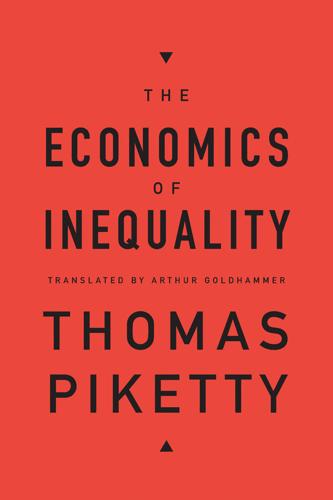
The Economics of Inequality
by
Thomas Piketty
and
Arthur Goldhammer
Published 7 Jan 2015
All these studies have found much higher elasticities (ranging from 0.7 to 1.2) for these groups than for those already employed (Blundell, 1995, p. 59; for a study of recent French data, compare Piketty, 1998). In other words, the prospect of earning a decent living seems to be more of an incentive for low-income people than the prospect of a still-higher income for those who are already well off: “poverty traps” are likely to be more important than “middle-income traps.” The evolution of the Earned Income Tax Credit (EITC) in the United States since the early 1990s has done much to invigorate this debate. The Earned Income Tax Credit in the United States The EITC, first introduced in 1975, is a tax credit that benefits people at the low end of the wage spectrum.

Connectography: Mapping the Future of Global Civilization
by
Parag Khanna
Published 18 Apr 2016
The wrenching side effects of rapid urbanization—a mass of marginalized migrant workers, high local government debt, and an oversupply of housing in many cities—are all germane to becoming a collection of 350 million urban consuming households. Many believe the future of the Chinese economy hinges on whether it can escape the “middle-income trap.” As it transforms from a command to a market economy, it must move sufficiently up the value chain, raise productivity, and rebalance toward consumption so that most of its citizens can command higher wages. Can China’s economic master planning and urbanization strategy come together to elevate its vast civilization toward the “Chinese Dream” of national prosperity?
…
China is not yet so confident that it doesn’t need more free zones to boost its international credibility—which is why it has so many that they practically blanket the whole country. Alibaba has even taken charge of an entire pilot zone on Hainan Island where it will provide its cloud computing and e-government platforms, as well as a branch of its e-commerce-focused Taobao University. If China ultimately succeeds in overcoming the middle-income trap, strategic urbanization will have been a big reason why. MASTER PLANNING FOR MEGACITIES The more advanced SEZs China builds, the more even rich countries are picking up on what was once considered a poor state’s model—both to stay ahead of and to connect to China’s key new hubs. South Korea’s Songdo International Business District is the most advanced such “smart city” effort.
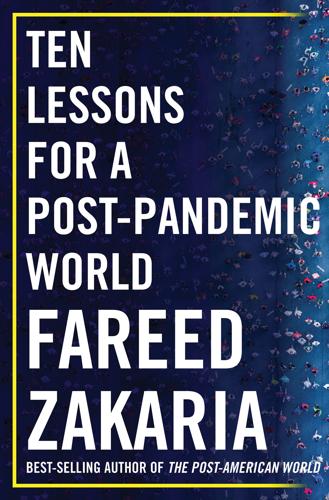
Ten Lessons for a Post-Pandemic World
by
Fareed Zakaria
Published 5 Oct 2020
But it is also true that Beijing faces increasing pressure to undertake even more reforms. Many Chinese economists and senior policymakers have argued that doing so is the only way for the country to modernize and grow its economy. Avoiding reform, they have warned, will leave the country floundering in the “middle-income trap”—a common fate in which countries escape poverty, only to hit a wall at a per capita GDP somewhere around $10,000, having refused to modernize their economic, regulatory, and legal systems any further. China passed the $10,000 milestone in 2019, but it could still get stuck. Even before the pandemic slashed its growth, China was resisting further reforms.
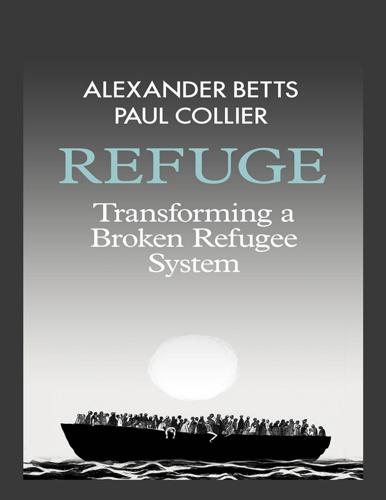
Refuge: Transforming a Broken Refugee System
by
Alexander Betts
and
Paul Collier
Published 29 Mar 2017
Might this offer a way to simultaneously benefit refugees, contribute to Jordan’s own nationaldevelopment strategy, and incubate the post-conflict recovery in Syria? Jordan is a middle-income country. As such, one of the key priorities of its national-development strategy is to make the leap to manufacturing. Yet transitioning to manufacturing is hard. Jordan is in a ‘middle-income trap’: unable to compete with low-income countries on cheap labour and unable to compete with advanced industrialized countries on technology and innovation. Much of the world’s manufacturing is today concentrated in China. For example, most of the world’s buttons are manufactured in just one city, colloquially known as ‘Buttonopolis’.

The Age of Stagnation: Why Perpetual Growth Is Unattainable and the Global Economy Is in Peril
by
Satyajit Das
Published 9 Feb 2016
Private-sector counterparts in both countries earn more. In contrast, a US worker at a fast-food outlet in Los Angeles receives the minimum wage of US$11 an hour plus a mandatory US$5 for healthcare benefits, for a total of US$16. This equates to an annual income of around US$33,000. Many emerging markets are caught in the middle-income trap, a phenomenon where countries experience a slowdown in economic growth when GDP per capita reaches around US$15,000. The necessary rebalancing to shift to the next level of development is difficult. China, which needs to move away from investment to greater consumption to drive economic activity, provides an example of the policy dilemmas.

The Dawn of Eurasia: On the Trail of the New World Order
by
Bruno Macaes
Published 25 Jan 2018
Transport and communication networks are no doubt a precondition for the development of global value chains, but the crucial element is the set of industrial policy decisions by which different countries strive to move into new chains or new segments within an already occupied value chain. In order to avoid getting trapped in a middle-income trap – a situation in which a country becomes stuck with its previous growth model after attaining a certain level of income – and speed up the process of moving into higher-value segments, China wants its industrial policy to be sufficiently articulated with those countries occupying other segments and chains.

Reimagining Capitalism in a World on Fire
by
Rebecca Henderson
Published 27 Apr 2020
World Economic Forum, Feb. 12, 2015, www.weforum.org/agenda/2015/02/are-family-firms-damaging-europes-growth/ and the stream of work by Nicholas Bloom and his collaborators referenced above. For more on the governance of family firms and their role in shaping the broader economy see Randall K. Morck, ed., A History of Corporate Governance Around the World (Chicago and London: University of Chicago Press, 2005) and Richard F. Doner and Ben Ross Schneiderm “The Middle-Income Trap: More Politics Than Economics,” World Politics 68, no. 4 (2016): 608–644. 50. Robert S. Harris, Tim Jenkinson, and Steven N. Kaplan, “How Do Private Equity Investments Perform Compared to Public Equity?” Journal of Investment Management 14 no. 3 (2016): 1–24; Robert S. Harris, Tim Jenkinson, and Steven N.

MegaThreats: Ten Dangerous Trends That Imperil Our Future, and How to Survive Them
by
Nouriel Roubini
Published 17 Oct 2022
China is still growing at about 4-5 percent, more than twice the rate of growth by the United States (except for 2021). China will become the largest economy in the world, there’s no doubt about that—it’s only a question of when. As China transitions from low income to middle income and from there possibly to high income and thus avoids the “middle income trap,” it will become increasingly innovative in technology. China is economically dynamic, especially in industries for the future. We may not like their state capitalist model but guess what: it has worked so far even if at the cost of creating some economic inefficiencies. Americans must adjust their mindset.
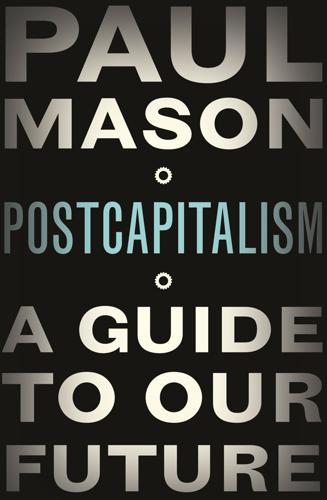
Postcapitalism: A Guide to Our Future
by
Paul Mason
Published 29 Jul 2015
In the cities, many will join the world’s slum-dwelling population, which already stands at a billion – and increasing numbers will attempt illegal migration to the rich world.20 The World Bank economist Branko Milanovic, surveying the huge and growing inequality in developing countries, calls this a ‘non-Marxian world’ in which location, not class, is responsible for two-thirds of all inequality.’21 His conclusion: ‘either poor countries will become richer or poor people will migrate to rich countries’. But for poor countries to become richer, they must break out of the so-called ‘middle-income trap’ – where countries typically develop to a certain point and then stall; both because they have to compete with the old imperial powers and because their corrupt elites strangle the emergence of functional modern institutions. Only thirteen countries out of 100 labelled ‘middle-income’ in 1960 had become high-income by 2012.
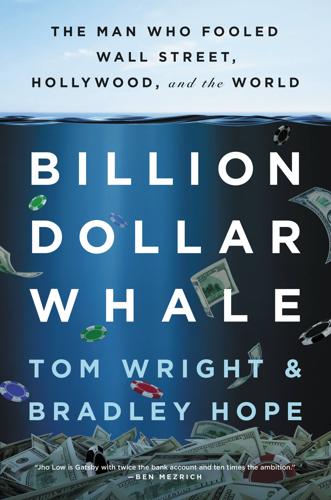
Billion Dollar Whale: The Man Who Fooled Wall Street, Hollywood, and the World
by
Tom Wright
and
Bradley Hope
Published 17 Sep 2018
Prime Minister Najib boasted the country would attain developed-world living standards by 2020. But the leaders of the country, as they enriched themselves, were failing to achieve this. With national income of $10,000 per person, a fifth of the United States’s level, Malaysia was stuck in the middle-income trap, no longer poor but not yet rich. In an earlier era, Japan, South Korea, Singapore, and Taiwan had reached developed-world status. Now, rampant corruption was condemning Malaysia, as well as Brazil, Russia, and a number of other nations, to mediocrity. But the elite—and those serving them—continued to thrive.
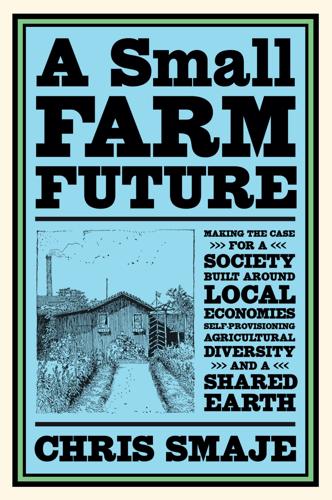
A Small Farm Future: Making the Case for a Society Built Around Local Economies, Self-Provisioning, Agricultural Diversity and a Shared Earth
by
Chris Smaje
Published 14 Aug 2020
Eastern Europe did better once it quit being a dependent periphery of the Soviet Union, and better still once it attached itself to Group 1 by becoming a dependent periphery of the European Union (bear in mind that Figure 1.2 makes convergence look greater than it truly is because I’ve distinguished the Eastern European countries as a separate group, despite their small populations). The high-growth Asian countries of Group 4 are pulling away from the large pack of Group 5 countries to which they once belonged and may someday match the richer groups if they can avoid the ‘middle-income trap’, though they have a long way to go to reach the level of Group 1. So arguably there’s a slight geographic drift in global economic power away from the northwest and towards the southeast. But more than a ‘great convergence’, the data in Figure 1.2 seem suggestive of a ‘great persistence’ or even a ‘great augmentation’ of inequalities grounded historically in the colonial and world system dynamics of the capitalist political economy.
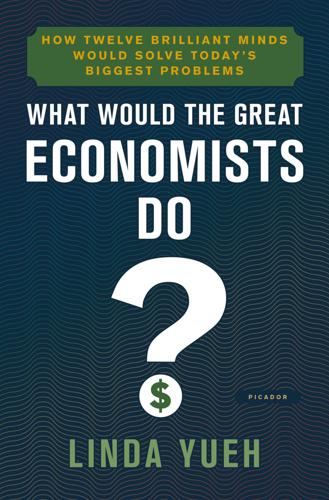
What Would the Great Economists Do?: How Twelve Brilliant Minds Would Solve Today's Biggest Problems
by
Linda Yueh
Published 4 Jun 2018
This is why there is so much focus on a country’s foreign exchange reserves, so that vulnerable economies can show that they possess foreign currency sufficient to pay for their imports and debt and are less affected by currency and capital movements. Such crises can derail economic growth for years. A currency or financial crisis can and has prevented emerging economies from becoming rich, since an extended period of growth is a necessary trait of the countries that have overcome the middle-income trap discussed earlier. South Korea and Taiwan both grew strongly for over two decades, for example. If developing countries can grow for sustained periods, not only would poverty end in those countries, but also they might even be propelled into the ranks of the rich. When it comes to sustained high growth rates, there is another concern.
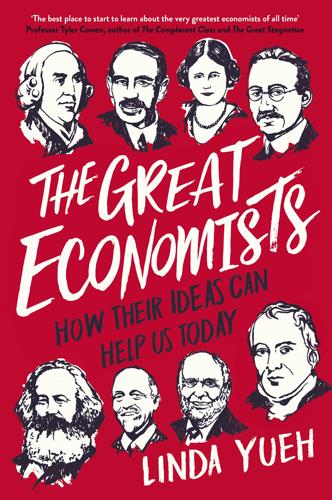
The Great Economists: How Their Ideas Can Help Us Today
by
Linda Yueh
Published 15 Mar 2018
This is why there is so much focus on a country’s foreign exchange reserves, so that vulnerable economies can show that they possess foreign currency sufficient to pay for their imports and debt and are less affected by currency and capital movements. Such crises can derail economic growth for years. A currency or financial crisis can and has prevented emerging economies from becoming rich, since an extended period of growth is a necessary trait of the countries that have overcome the middle-income trap discussed earlier. South Korea and Taiwan both grew strongly for over two decades, for example. If developing countries can grow for sustained periods, not only would poverty end in those countries, but also they might even be propelled into the ranks of the rich. When it comes to sustained high growth rates, there is another concern.
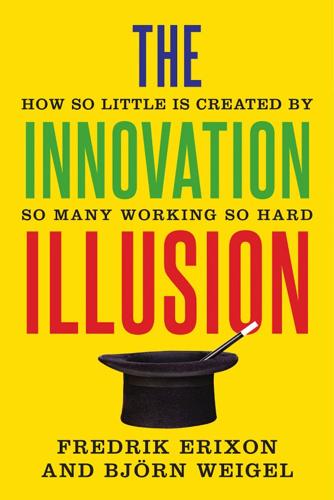
The Innovation Illusion: How So Little Is Created by So Many Working So Hard
by
Fredrik Erixon
and
Bjorn Weigel
Published 3 Oct 2016
At http://techcrunch.com/2013/09/03/nokia-reinvention/. Luttwak, Edward, Turbo-capitalism: Winners and Losers in the Global Economy. Harper-Collins, 1999. Maddison, Angus, “Confessions of a Chiffrephile.” PSL Quarterly Review, 47.189 (1994). Magnus, George, “Hitting a BRIC Wall: The Risk of the Middle-Income Trap.” UBS Investment Research, Jan. 21, 2013. Magnus, George, The Age of Aging: How Demographics Are Changing the Global Economy and Our World. Wiley, 2012. Mahbubani, Kishore, “The Case Against the West.” Foreign Affairs, May 3, 2008. At https://www.foreignaffairs.com/articles/asia/2008-05-03/case-against-west.

Destined for War: America, China, and Thucydides's Trap
by
Graham Allison
Published 29 May 2017
At its current position on the development spectrum, China needs many more years of high growth rates to catch up to the living standards of the world’s most advanced economies. China’s per capita income is still less than one-third that of South Korea or Spain, and one-fifth that of Singapore or the US. As it steadily moves from the manufacture of basic goods to higher-value products and services, incomes should increase. But Xi is wary of the middle-income trap that has ensnared many developing countries as rising wages erase their competitive edge in manufacturing. This is the impetus for what he calls “supply-side reforms,” which aim to rebalance China’s export-led economy with domestic consumption and services. In fact, China’s service sector grew by 8 percent in 2015, and for the first time accounted for over 50 percent of GDP.49 To reduce inefficiency in state-owned enterprises, Beijing has promised to “ruthlessly bring down the knife on zombie enterprises”—companies that operate despite being technically insolvent—cutting four million jobs in the process.50 Meanwhile, the “Made in China 2025” plan calls for raising the quality and technological sophistication of Chinese products.

The Future Is Asian
by
Parag Khanna
Published 5 Feb 2019
This process is crucial in adjusting the rapid automation of factory labor. Asia’s developing urbanization is evidence of one important strategy for confronting the threat of premature deindustrialization—the theory that not enough high-wage jobs are being created by the services economy to propel countries out of the so-called middle-income trap. But Asian industry is hardly disappearing, either. There may be fewer jobs in industry relative to the size of the labor force than a generation ago, but there are still more than 100 million manufacturing workers across Asia. Countries climbing toward middle-income status such as India and the Philippines are grabbing all possible industrial activity for their workers.

The Billionaire Raj: A Journey Through India's New Gilded Age
by
James Crabtree
Published 2 Jul 2018
Perversely, the closer India comes to its ambitions of near-double-digit growth, the faster this will happen. It is unfair to blame these trends on Modi, although he has done little to reverse them. Yet there will be grim consequences if they continue unabated. Those Latin American economies with the widest social divides have proved less economically stable and more likely to get stuck in the “middle-income trap,” in which poorer nations achieve moderate prosperity but fail to become rich.3 The more successful countries of east Asia, by contrast, grew prosperous while managing to stay broadly egalitarian, partly by building basic social safety nets. Of the two models, it seems clear which India should want to follow.

Good Economics for Hard Times: Better Answers to Our Biggest Problems
by
Abhijit V. Banerjee
and
Esther Duflo
Published 12 Nov 2019
When China was at the same level of per capita GDP as India is today, it was growing at 12 percent per year, whereas India thinks of 8 percent as something to aspire to. If we were to extrapolate from that, India will plateau at a much lower level of per capita GDP than China. The growth tide does raise all boats, but it doesn’t lift all boats to the same level—many economists worry that there may be such a thing as the middle-income trap, an intermediate-level GDP where countries get stuck or nearly stuck. According to the World Bank, of 101 middle-income economies in 1960, only 13 had become high income by 2008.122 Malaysia, Thailand, Egypt, Mexico, and Peru all seem to have trouble moving up. Of course, there are many pitfalls in any such extrapolation, and India should treat it as what it is: no more than a warning.
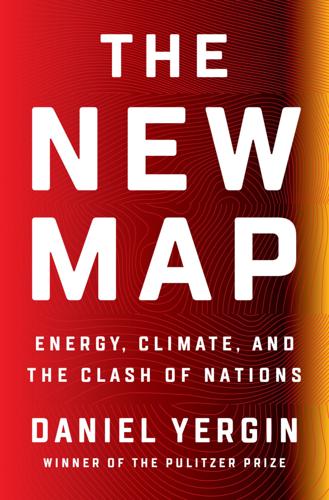
The New Map: Energy, Climate, and the Clash of Nations
by
Daniel Yergin
Published 14 Sep 2020
Beijing’s “Made in China” 2025 strategy, enunciated in 2017, aims to make China a leader in ten high-tech industries. The Chinese point out that their per capita income is only about one-sixth that of the United States and that it needs to move up the value chain to avoid the stagnation of the “middle income trap.” The goal is also to “catch up” with the United States. In his speech, Pence responded that “the Communist Party” of China could end up “controlling 90 percent of the world’s most advanced industries,” which would enable it “to win the commanding heights of the 21st century economy.”22 The battle over technology has already been joined over 5G connectivity and, specifically, the Chinese company Huawei.
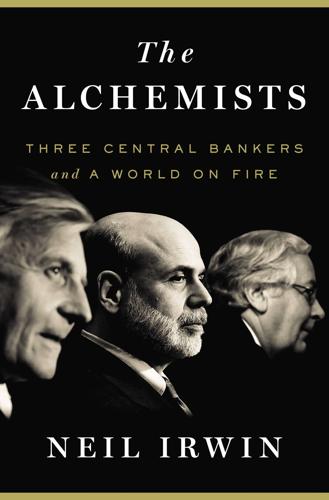
The Alchemists: Three Central Bankers and a World on Fire
by
Neil Irwin
Published 4 Apr 2013
In Zhou’s decade as governor of the Chinese central bank, there was remarkable progress made toward creating a more liberal, market-oriented national financial system. In the early 2000s, China was at a crossroads. It didn’t want to get stuck being merely the factory for the rest of the world and providing only middling wages for its citizens (a situation known as the middle-income trap). A modern financial system would be required to fund the industries of the future and allow China to assert its influence across Asia and the world. The nation’s old system, however, had worked marvelously to bring hundreds of millions of people out of dire poverty since the 1980s. It’s difficult to turn away from a system that’s working, whatever its limitations.

The Long Game: China's Grand Strategy to Displace American Order
by
Rush Doshi
Published 24 Jun 2021
And when those payments are combined with mandatory non-discretionary spending, a large and growing share of GDP that is difficult to adjust through public policy, the fiscal space for strategic competition shrinks further. It is true that China faces disadvantages—a demographic slowdown, the middle-income trap, high levels of public debt, a problematic financial system—and that the openness of the US system buttresses the dollar’s dominance and enables Washington to raise significant resources in debt markets. But overall, while the United States remains a large, young, and growing country, it is still a smaller one than China, and one that faces democratic limits on resource mobilization for long-term competition as well as significant fiscal headwinds.